Shure orporated P10TJ Personal monitor system dual-channel transmitter User Manual Exhibit D Users Manual per 2 1033 c3
Shure Incorporated Personal monitor system dual-channel transmitter Exhibit D Users Manual per 2 1033 c3
Exhibit D Users Manual per 2 1033 c3
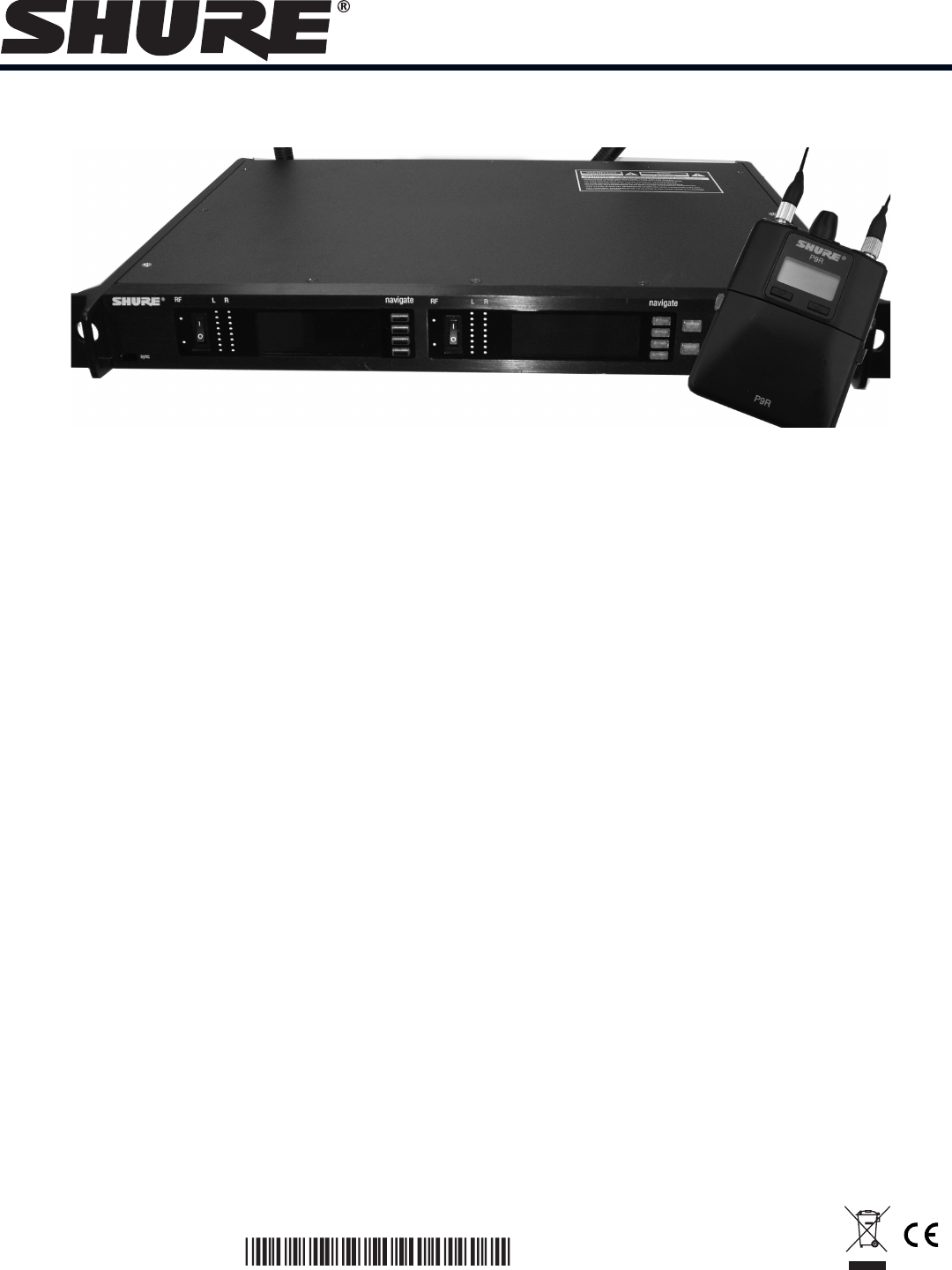
© 2010 Shure Incorporated
Printed in U.S.A.
27A14811 (Rev. 1)
PSM®1000
Personal Monitor Wireless System
Guide de l’utilisation du système de retour personnel
Personal Monitor System Bedienungsanleitung
Guía del usuario del sistema de monitoreo personal
Guida all’uso del sistema di monitoraggio personale
Manual do Usuário do Sistema de Monitoração Pessoal
Система личного монитора беспроволочная
For Placement Only
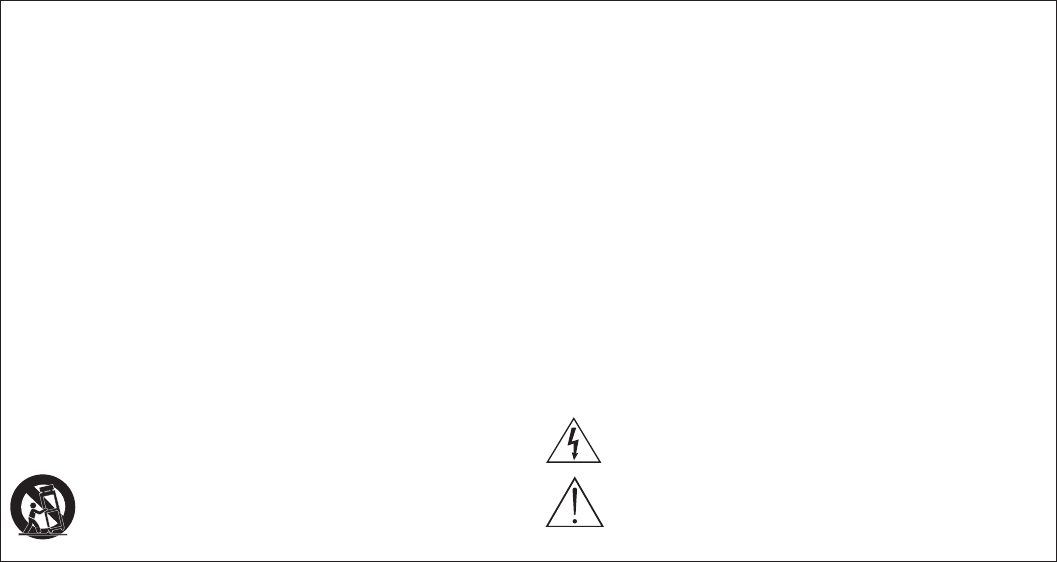
1. READ these instructions.
2. KEEP these instructions.
3. HEED all warnings.
4. FOLLOW all instructions.
5. DO NOT use this apparatus near water.
6. CLEAN ONLY with dry cloth.
7. DO NOT block any ventilation openings. Install in accordance with
the manufacturer’s instructions.
8. DO NOT install near any heat sources such as radiators, heat
registers, stoves, or other apparatus (including amplifi ers) that
produce heat.
9. DO NOT defeat the safety purpose of the polarized or grounding-
type plug. A polarized plug has two blades with one wider than the
other. A grounding type plug has two blades and a third grounding
prong. The wider blade or the third prong are provided for your
safety. If the provided plug does not fi t into your outlet, consult an
electrician for replacement of the obsolete outlet.
10. PROTECT the power cord from being walked on or pinched,
particularly at plugs, convenience receptacles, and the point where
they exit from the apparatus.
11. ONLY USE attachments/accessories specifi ed by the
manufacturer.
12.
13. UNPLUG this apparatus during lightning storms or when unused
for long periods of time.
14. REFER all servicing to qualifi ed service personnel. Servicing is
required when the apparatus has been damaged in any way, such
as power supply cord or plug is damaged, liquid has been spilled
or objects have fallen into the apparatus, the apparatus has been
exposed to rain or moisture, does not operate normally, or has
been dropped.
15. DO NOT expose the apparatus to dripping and splashing. DO
NOT put objects fi lled with liquids, such as vases, on the appara-
tus.
16. The MAINS plug or an appliance coupler shall remain readily oper-
able.
17. The airborne noise of the Apparatus does not exceed 70dB (A).
18. Apparatus with CLASS I construction shall be connected to a
MAINS socket outlet with a protective earthing connection.
19. To reduce the risk of fi re or electric shock, do not expose this ap-
paratus to rain or moisture.
20. Do not attempt to modify this product. Doing so could result in
personal injury and/or product failure.
IMPORTANT SAFETY INSTRUCTIONS
USE only with a cart, stand, tripod, bracket, or table speci-
fi ed by the manufacturer, or sold with the apparatus. When
a cart is used, use caution when moving the cart/apparatus
combination to avoid injury from tip-over.
This symbol indicates that dangerous voltage constituting a
risk of electric shock is present within this unit.
This symbol indicates that there are important operating and
maintenance instructions in the literature accompanying this
unit.

iii
AVERTISSEMENT !
L'ÉCOUTE AUDIO À UN VOLUME SONORE EXCESSIF PEUT CAUSER DES LÉSIONS
AUDITIVES PERMANENTES. RÉGLER LE VOLUME LE PLUS BAS POSSIBLE.
Une surexposition à des volumes sonores excessifs peut causer des lésions aux oreilles
entraînant une perte auditive permanente due au bruit. Se conformer aux directives ci-dessous,
établies par l'Occupational Safety Health Administration (OSHA) pour les limites de durée
d'exposition aux pressions acoustiques (SPL) avant de risquer des lésions auditives.
SPL de 90 dB
pendant 8 heures
SPL de 95 dB
pendant 4 heures
SPL de 100 dB
pendant 2 heures SPL de 105 dB
pendant 1 heure
SPL de 110 dB pen-
dant 1/2 heure
SPL de 115 dB
pendant 15 minutes
SPL de 120 dB
À éviter : risque de lésions auditives
WARNING!
LISTENING TO AUDIO AT EXCESSIVE VOLUMES CAN CAUSE PERMANENT HEARING
DAMAGE.
USE AS LOW A VOLUME AS POSSIBLE.
Over exposure to excessive sound levels can damage your ears resulting in permanent noise-
induced hearing loss (NIHL). Please use the following guidelines established by the Occupational
Safety Health Administration (OSHA) on maximum time exposure to sound pressure levels before
hearing damage occurs.
90 dB SPL
at 8 hours
95 dB SPL
at 4 hours
100 dB SPL
at 2 hours
105 dB SPL
at 1 hour
110 dB SPL
at ½ hour
115 dB SPL
at 15 minutes
120 dB SPL
Avoid or damage may occur
ACHTUNG!
MÖGLICHST GERINGE LAUTSTÄRKEPEGEL VERWENDEN.
Längerfristiges Hören bei übermäßigen Schallpegeln kann zu Hörschäden und zu
permanentem, durch Lärm verursachten Gehörverlust führen. Bitte orientieren Sie sich
an den folgenden von der Occupational Safety Health Administration (OSHA; US-
Arbeitsschutzbehörde) erstellten Richtlinien für die maximale zeitliche Belastung durch
Schalldruckpegel, bevor es zu Hörschäden kommt.
bei 90 dB
Schalldruckpegel
max. 8 Stunden
bei 95 dB
Schalldruckpegel
max. 4 Stunden
bei 100 dB
Schalldruckpegel
max. 2 Stunden
bei 105 dB
Schalldruckpegel
max. 1 Stunde
bei 110 dB
Schalldruckpegel
max. ½ Stunde
bei 115 dB
Schalldruckpegel
max. 15 Minuten
120 dB Schalldruckpegel
vermeiden; ansonsten können Schäden
auftreten
ADVERTENCIA
EL ESCUCHAR REPRODUCCIONES DE AUDIO A NIVELES EXCESIVOS DE VOLUMEN
PUEDE CAUSAR DAÑOS PERMANENTES AL OIDO. USE EL VOLUMEN MAS BAJO
POSIBLE.
La exposición prolongada a niveles sonoros excesivamente intensos puede dañar los oídos y
causar una pérdida permanente del oído causada por ruidos. Respete los lineamientos dados
a continuación, los cuales fueron establecidos por la Administración de Salud y Seguridad
Ocupacional (OSHA) de los EE.UU. e indican el tiempo máximo que puede escucharse un
nivel determinado de presión sonora (SPL) antes de producirse daños al oído.
90 dB SPL
por 8 horas
95 dB SPL
por 4 horas
100 dB SPL
por 2 horas
105 dB SPL
por 1 hora
110 dB SPL
por 1/2 hora
115 dB SPL
por 15 minutos
120 dB SPL
Evítese por completo, puesto que puede
causar daños inmediatos
SAFETY PRECAUTIONS
The possible results of incorrect use are marked by one of the two symbols
- “WARNING” AND “CAUTION” - depending on the imminence of the danger
and the severity of the damage.
WARNING: Ignoring these warnings may cause severe injury or death
as a result of incorrect operation.
CAUTION: Ignoring these cautions may cause moderate injury or prop-
erty damage as a result of incorrect operation.
WARNING
• If water or other foreign objects enter the inside of the device, fire or
electric shock may result.
• Do not attempt to modify this product. Doing so could result in personal
injury and/or product failure.
CAUTION
• Never disassemble or modify the device, as failures may result.
• Do not subject to extreme force and do not pull on the cable or failures
may result.
• Keep the microphone dry and avoid exposure to extreme temperatures
and humidity.
WARNING: This product contains a chemical known to the State of California to cause cancer and
birth defects or other reproductive harm
PRÉCAUTIONS DE SÉCURITÉ
Les résultats possibles d'une utilisation incorrecte sont signalés par l'un des deux
symboles - AVERTISSEMENT et ATTENTION - selon l'imminence du danger et
la sévérité des dommages.
AVERTISSEMENT : L'ignorance de ces avertissements peut causer des
blessures graves ou la mort suite à une utilisation incorrecte.
ATTENTION: L'ignorance de ces mises en garde peut causer des bles-
sures modérées ou des dégâts matériels suite à une utilisation incorrecte.
AVERTISSEMENT
• Si de l'eau ou autres matériaux étrangers pénètrent dans l'appareil, il y a
risque d'incendie ou de choc électrique.
• Ne pas essayer de modifier ce produit. Une telle opération est susceptible
d'entraîner des blessures ou la défaillance du produit.
ATTENTION
• Ne jamais désassembler ou modifier cet appareil sous peine de provoquer
des défaillances.
• Ne pas soumettre le câble à des forces extrêmes et ne pas tirer dessus sous
peine de provoquer des défaillances.
• Maintenir le microphone sec et éviter de l'exposer à des températures
extrêmes et à l'humidité.
Die möglichen Folgen des fehlerhaften Gebrauchs, die durch eines der
beiden Symbole - „ACHTUNG“ und „VORSICHT“ - markiert sind, hängen von
der Unmittelbarkeit der bevorstehenden Gefahr und des Schweregrads der
Beschädigung ab.
ACHTUNG: Die Nichtbeachtung dieser Warnhinweise kann schwere oder
tödliche Verletzungen infolge des fehlerhaften Gebrauchs verursachen.
VORSICHT: Die Nichtbeachtung dieser Vorsichtshinweise kann mittel-
schwere Verletzungen oder Sachschäden infolge des fehlerhaften
Gebrauchs verursachen.
ACHTUNG
• Falls Wasser oder andere Fremdstoffe/-körper in das Gerät gelangen, kann es
zu Bränden oder Stromschlägen kommen.
• Nicht versuchen, dieses Produkt zu modifizieren. Ansonsten könnte es zu
Verletzungen und/oder zum Produktausfall kommen.
VORSICHT
• Das Gerät nie auseinanderbauen oder modifizieren, da dies zu Ausfällen
führen kann.
• Keinen extremen Kräften aussetzen und nicht am Kabel ziehen, da dies zu
Ausfällen führen kann.
• Das Mikrofon trocken halten und keinen extremen Temperaturen oder
extremer Luftfeuchtigkeit aussetzen.
SICHERHEITSVORKEHRUNGEN
PRECAUCIONES DE SEGURIDAD
Los posibles resultados del uso incorrecto de este producto se denotan por
medio de uno de dos símbolos - “ADVERTENCIA” y “PRECAUCION” - según la
inminencia del peligro y el grado de severidad de los daños.
ADVERTENCIA: Si se pasan por alto estas advertencias se podría causar
lesiones graves o mortales como resultado del uso incorrecto.
PRECAUCION: Si se pasan por alto estas precauciones se podría causar
lesiones moderadas y daños a la propiedad como resultado del uso
incorrecto.
ADVERTENCIA
• Si el agua u otros objetos extraños penetran el dispositivo, se podría causar
un incendio o sacudidas eléctricas.
• No intente modificar este producto. Hacerlo podría causar lesiones
personales y/o la falla del producto.
PRECAUCION
• Nunca desarme ni modifique el dispositivo, ya que esto podría causar fallas.
• No someta el aparato a fuerzas extremas ni tire de su cable, ya que esto
podría causar fallas.
• Mantenga el micrófono seco y evite exponer el aparato a niveles extremos de
temperatura y humedad.
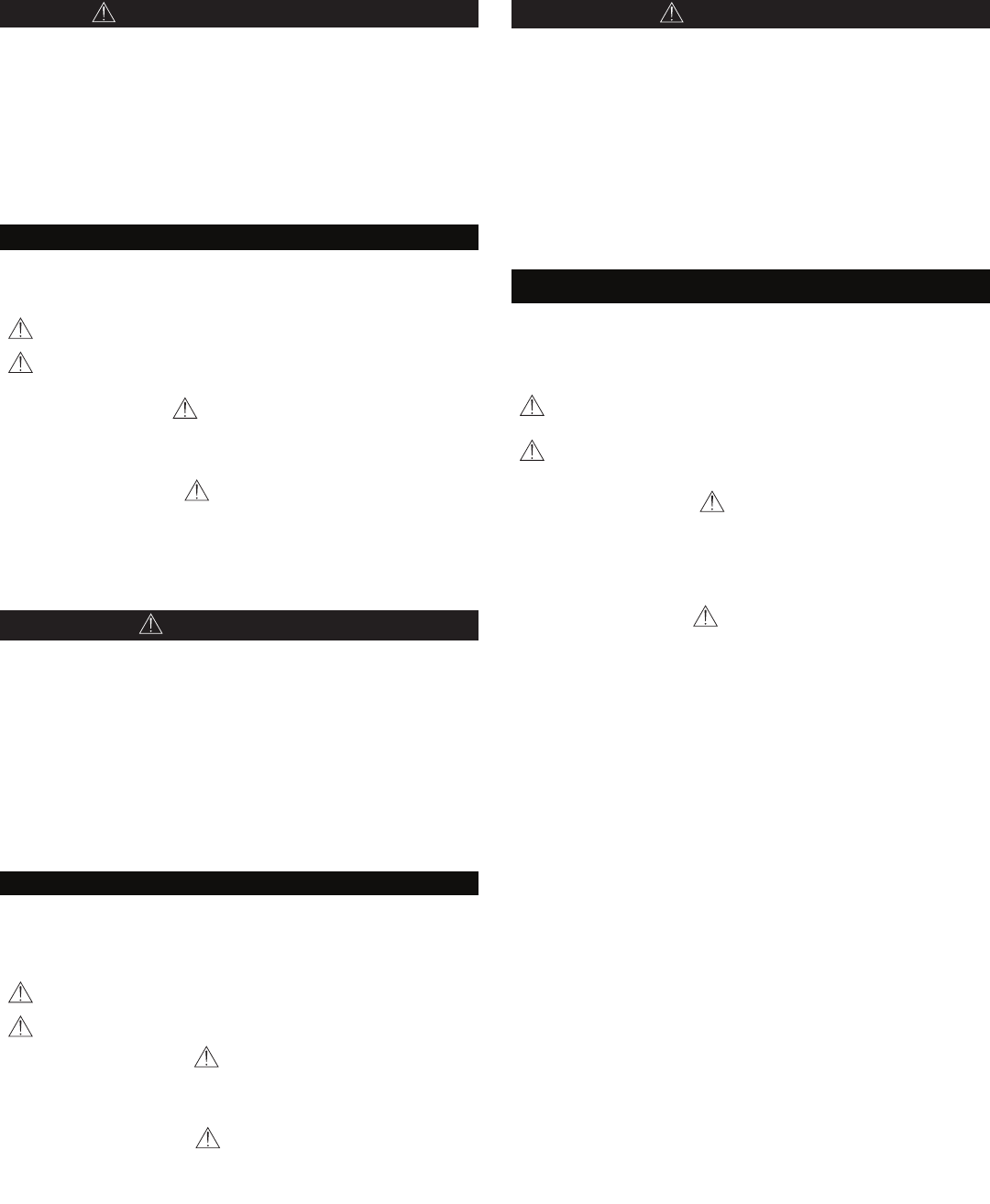
iv
AVVERTENZA
L'ASCOLTO A VOLUME ECCESSIVAMENTE ELEVATO PUÒ DANNEGGIARE L'UDITO IN
MODO PERMANENTE. MANTENETE IL VOLUME AL PIÙ BASSO LIVELLO POSSIBILE.
La sovraesposizione a livelli sonori eccessivi può danneggiare l'udito provocando una perdita
di udito permanente causata dal rumore. Si consiglia di attenersi alle seguenti direttive stabilite
dalla OSHA (Occupational Safety Health Administration) sul tempo massimo di esposizione
a vari livelli di pressione sonora (SPL), oltre il quale si rischia di causare lesioni all'apparato
uditivo.
90 dB di SPL
per 8 ore
95 dB di SPL
per 4 ore
100 dB SPL
per 2 ore
105 dB di SPL
per 1 ora
110 dB di SPL
per mezz'ora
115 dB di SPL
per 15 minuti
120 dB di SPL
Evitate l'esposizione per non rischiare
di danneggiare l'udito
OUVIR O SOM COM VOLUME MUITO ALTO PODE CAUSAR DANOS PERMANENTES
À AUDIÇÃO. USE O VOLUME MAIS BAIXO POSSÍVEL.
ATENÇÃO!
A exposição a sons excessivamente altos pode danificar os ouvidos e resultar em perda
permanente da audição devido ao ruído. Siga as recomendações estipuladas pela
Administração de Saúde e Segurança do Trabalho dos E.U.A. (U.S. Occupational Safety
Health Administration-OSHA) sobre o máximo tempo de exposição a determinados níveis
de pressão sonora (SPL) a fim de evitar danos à audição.
90 dB SPL
por 8 horas
95 dB SPL
por 4 horas
100 dB SPL
por 2 horas
105 dB SPL
por 1 hora
110 dB SPL
por ½ hora
115 dB SPL
por 15 minutos
120 dB SPL
Evite ou poderá ocorrer dano
ПРОСЛУШИВАНИЕ ЗВУКА ПРИ ЧРЕЗМЕРНО ВЫСОКОЙ ГРОМКОСТИ МОЖЕТ
ПРИВЕСТИ К НЕОБРАТИМОМУ ПОВРЕЖДЕНИЮ СЛУХА.ИСПОЛЬЗУЙТЕ КАК МОЖНО
БОЛЕЕ НИЗКУЮ ГРОМКОСТЬ.
Длительноевоздействиезвукачрезмерновысокогоуровняможетпричинить
вамвред,вызвавнеобратимуюпотерюслухаиз-зашума.Воизбежаниепотери
слухаруководствуйтесьследующимиправилами,установленнымиУправлением
охранытруда(OSHA)вотношениимаксимальноговременивоздействия
различныхуровнейзвуковогодавления(УЗД).
УЗД 90 дБ
8часов
УЗД 95 дБ
4часа
УЗД 100 дБ
2часа
УЗД 105 дБ
1час
УЗД 110 дБ
1/2часа
УЗД 115 дБ
15минут
УЗД 120 дБ
Недопустимо—ведеткповреждениюслуха
ВНИМАНИЕ:
PRECAUZIONI DI SICUREZZA
I possibili effetti di un uso errato sono contrassegnati da uno dei due simboli
-“AVVERTIMENTO”E“ATTENZIONE”—asecondadell'incombenzadelperi-
colo e della gravità del danno.
AVVERTIMENTO: come conseguenza di un funzionamento errato, ignorare
questi messaggi può comportare lesioni personali gravi o mortali.
ATTENZIONE: come conseguenza di un funzionamento errato, ignorare
questi messaggi può comportare lesioni personali di media gravità o danni
alla cose.
AVVERTIMENTO:
• L'eventuale introduzione di acqua o di altri corpi estranei nel dispositivo può dare luogo
allo sviluppo di incendi o a folgorazione.
• Non tentate di modificare il prodotto. Tale operazione può causare infortuni e/o il guasto
del prodotto stesso.
ATTENZIONE
• Per evitare di provocare possibili danni, non smontate nè modificate il dispositivo.
• Per evitare di provocare possibili danni, non applicate una forza estrema sul cavo e
non tiratelo.
• Mantenete il prodotto asciutto e non esponetelo a temperature estreme ed all'umidità.
MEDIDAS DE SEGURANÇA
Os possíveis resultados do uso incorreto são marcados por um de dois símbolos
- “ATENÇÃO” e “CUIDADO” - dependendo da iminência do perigo e da
severidade
do dano.
TENÇÃO: Não seguir esses avisos de atenção pode causar lesão grave ou
morte em conseqüência da operação incorreta.
CUIDADO: Não seguir esses avisos de cuidado pode causar lesão mod-
erada ou danos à propriedade em conseqüência da operação incorreta.
ATENÇÃO
• Incêndio ou choque elétrico pode ocorrer caso água ou objetos estranhos entrem no
dispositivo
• Não tente modificar este produto. pois pode resultar em lesão pessoal e/ou falha do
produto.
CUIDADO
• Não desmonte ou modifique o dispositivo uma vez que pode resultar em falhas.
• Não sujeite à força demasiada e não puxe o cabo pois pode resultar em falhas.
• Mantenha o microfone seco e evite expor a temperaturas extremas e umidade.
УКАЗАНИЯ ПО ТЕХНИКЕ БЕЗОПАСНОСТИ
Возможныерезультатынеправильногоиспользованияотмеченыодним
издвухзнаков-«ВНИМАНИЕ»и«ОСТОРОЖНО»-взависимостиот
неизбежностиопасностиисерьезностиповреждений.
ВНИМАНИЕ:Игнорированиеэтихпредупрежденийможетпривестик
серьезнойтравмеилисмертиврезультатенеправильной
эксплуатации.
ОСТОРОЖНО:Игнорированиеэтихпредупрежденийможетпривести
кнезначительнойтравмеилиповреждениюимуществаврезультате
неправильнойэксплуатации.
ВНИМАНИЕ
• Есливустройствопопадетводаилииныепосторонниепредметы,это
можетпривестиквозгораниюилипоражениюэлектрическимтоком.
• Непытайтесьмодифицироватьэтоизделие.Этоможетпривестик
личнойтравмеи(или)поломкеизделия.
ОСТОРОЖНО
• Нивкоемслучаенеразбирайтеинемодифицируйтеэтоустройство,
посколькуэтоможетпривестикполомке.
• Неподвергайтесильнымнагрузкаминетянитезакабель-этоможет
привестикполомке.
• Содержитемикрофонсухиминеподвергайтееговоздействиюочень
высокихилинизкихтемпературивлажности.
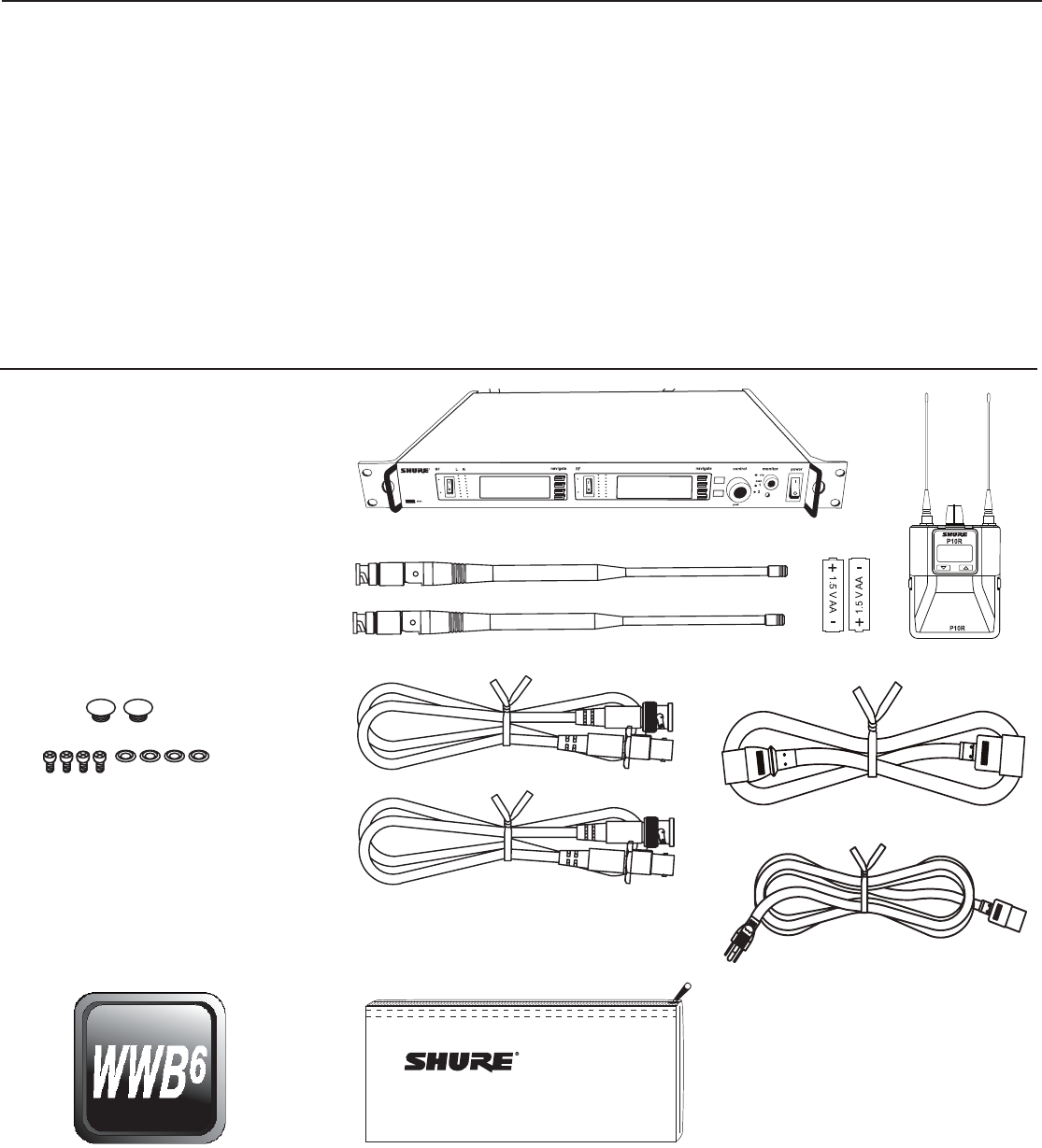
LR
1
PSM1000
The PSM1000 Personal Monitor System from Shure brings personal monitoring to its most advanced level yet. The full-rack, dual-channel, networked trans-
mitter is ideally suited for the demands of elite-level professional touring and installation applications, and the diversity bodypack receiver delivers pristine RF
signal and audio quality. Networkability over Ethernet connection enables remote control of transmitter functions and comprehensive frequency coordination
via Wireless Workbench software.
Features
Advanced Setup and Operation
• Visual display of scan plotting in a rich graphical environment
• Remote control of transmitter settings
RF mute enable/disable
RF output power adjustments
Aux/line level
Audio input level
Channel/device name edit
• Directly update firmware with WWB through software update
Touring-Grade Performance
• Full rack, dual channel transmitter in a rugged, professional chassis
• Twin-antenna diversity bodypack virtually eliminates drop-outs from
interference
• Precision front-end RF filtering reduces RF interference for a cleaner,
stronger RF signal, fewer dropouts, and less audible artifacts.
• CueMode allows monitoring of different stage mixes and storing of up to
20 separate channels on one bodypack for quick and easy reference.
• Internal power supply with IEC in/out ports enables easy power chaining
in the rack
• Backwards compatibility with PSM900 receivers for simplified inventory
management
Components
P10T: Rack mount Transmitter
P10R: Bodypack Receiver
Two 1/2 Wave Antennas
AA Batteries (2)
Two Antenna Cables
IEC Power Cable and IEC Extension Cable
Ethernet Network Cable
Wireless Workbench Software
Zippered Bag
Rack mount supplies
2 antenna hole plugs
4 rack mount screws with washers
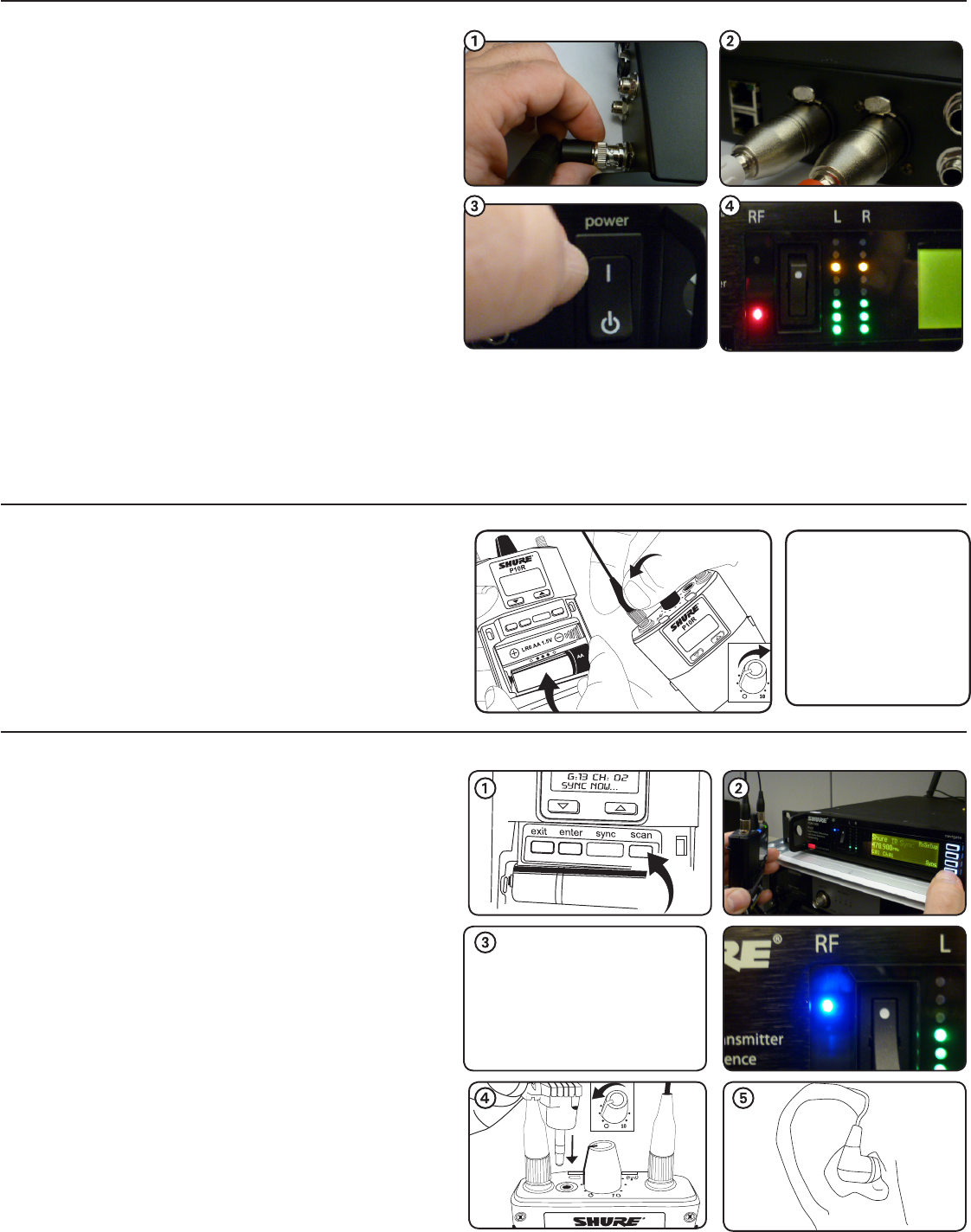
AA
new illustration to follow
2
Quickstart Instructions
Home Screen on
Bpack..
fix polarity of battery
Bodypack
Open by pressing the latches on both sides and pulling. Insert the bat-
teries or battery pack and attach antennas. Turn on using the volume
knob. The battery light illuminates.
Scan and Sync
1. On the bodypack, press the scan button. The display flashes
SYNC NOW....
2. Align the IR windows on the bodypack and rack unit, and press the
sync button on the transmitter. The IR window on the transmitter
illuminates. Press the sync button again. The rack unit level LEDs
flash, and it displays SYNC SUCCESS.
3. Turn the RF switch on. The blue RF LED illuminates on the
bodypack to indicate that it is detecting the transmitter. The
bodypack also displays the RF signal strength (RF).
4. IMPORTANT: Turn bodypack volume down before plugging
in earphones.
5. Insert the earphones and slowly turn up the volume.
1. Connect to a power outlet using the supplied power cable.
2. Attach the supplied antennas to the ANTENNA OUT
BNC connectors.
3. Connect the audio source, such as the output of a mixer, to the
audio inputs. You can use both input jacks or choose either one
for a mono source.
4. Switch off RF and power on.
5. For mono (one input), access the AUDIO menu and select MONO.
6. Set the input sensitivity to match the source by selecting AUDIO
> INPUT from the LCD configuration menu: AUX–10dBV or
LINE+4dBu.
7. Adjust the audio source level so that, for the average input sig-
nal level, the top two yellow LEDs flicker and the lower LEDs are
solid. If the red clip LED illuminates and a warning appears on the
LCD, the inputs are overdriven. Decrease the level by entering
the AUDIO menu and using the control wheel to change the input
sensitivity to +4 dBu. If the signal level is too low, change the input
sensitivity to –10 dBV.
Rack mount Transmitter
Pay no attention to these, they are placeholders...new illustra-
tions to follow...
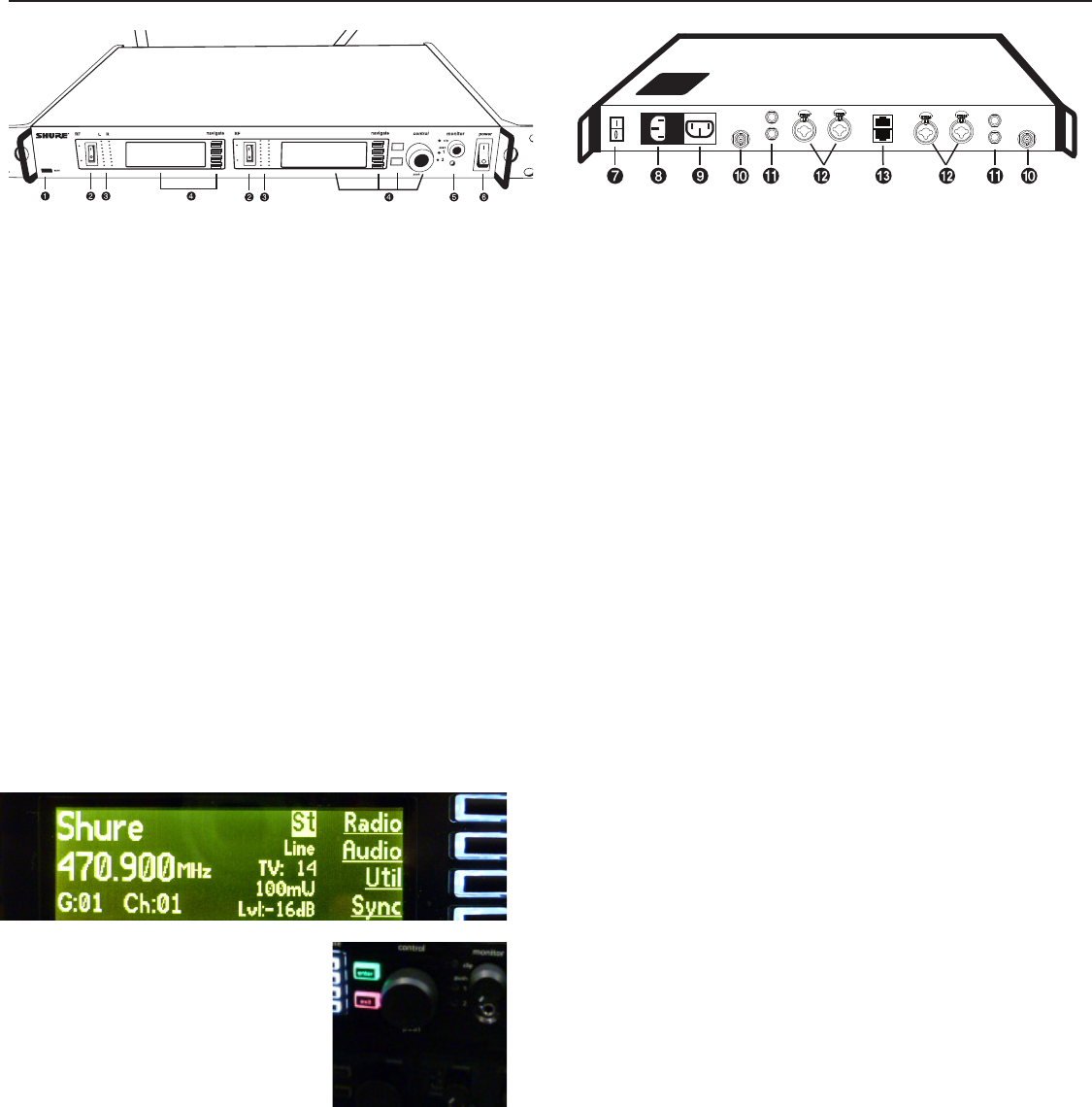
LR
photos for placement only
new illustrations to come...
3
P10T Rack Mount Transmitter
Rear Panel Connectors
⑦Primary Side Switch Primary power switch, only front power switch can
be locked from utilities menu.
⑧Power AC mains power input, IEC Connector 100-240 Vac.
⑨AC mains power pass-through Use with an IEC extension cable to
supply AC power to another device. Unswitched.
⑩Antenna (BNC) port Attach supplied antennas. If you are rack mounting,
use a front panel or remote mounting kit from Shure.
⑪LOOP OUT Sends audio signal going into the transmitter to another
device. See LOOP Applications.
⑫Audio Inputs Connect to balanced or unbalanced outputs. Use either
connector for mono input. Accepts XLR or 6.35 mm (1/4”) TRS
⑬Ethernet Jack Accepts an RJ-45 jack for Ethernet network interface.
Two port Ethernet switch for networking multiple units.
①Sync Window Align bodypack IR window with sync window
on TX.
②RF Switch Mutes RF output. For setting up multiple systems
or adjusting settings without transmitting unwanted RF or
audio signals.
③Audio Indicators Use the control wheel to adjust the audio so
that, for the average input signal level, the top two yellow LEDs
flicker and the lower LEDs are solid. Press the enter button
to save the value, exit to cancel. The red clip LED indicates
the inputs are over driven. Reduce the level at the audio source
or change the input sensitivity of the rack unit from the
AUDIO>INPUT menu.
④Status Display and Controls Use the navigation buttons to
access the configuration menu. Push the control wheel to move
the cursor to the next item. Turn the control wheel to change
aparameter—theenterbuttonflashes.Pressittosavethe
value. Press the exit button to cancel changes and return to the
previous menu.
⑤Headphone Monitoring The monitor control adjusts signal output to the
3.5 mm headphone jack. Push button to toggle between transmitters.
Monitor clip LED indicates headphone audio is clipping.
⑥Power Switch Turns the unit on and off. Power switch and front panel
can be locked from the utilities menu.
Front Panel Controls
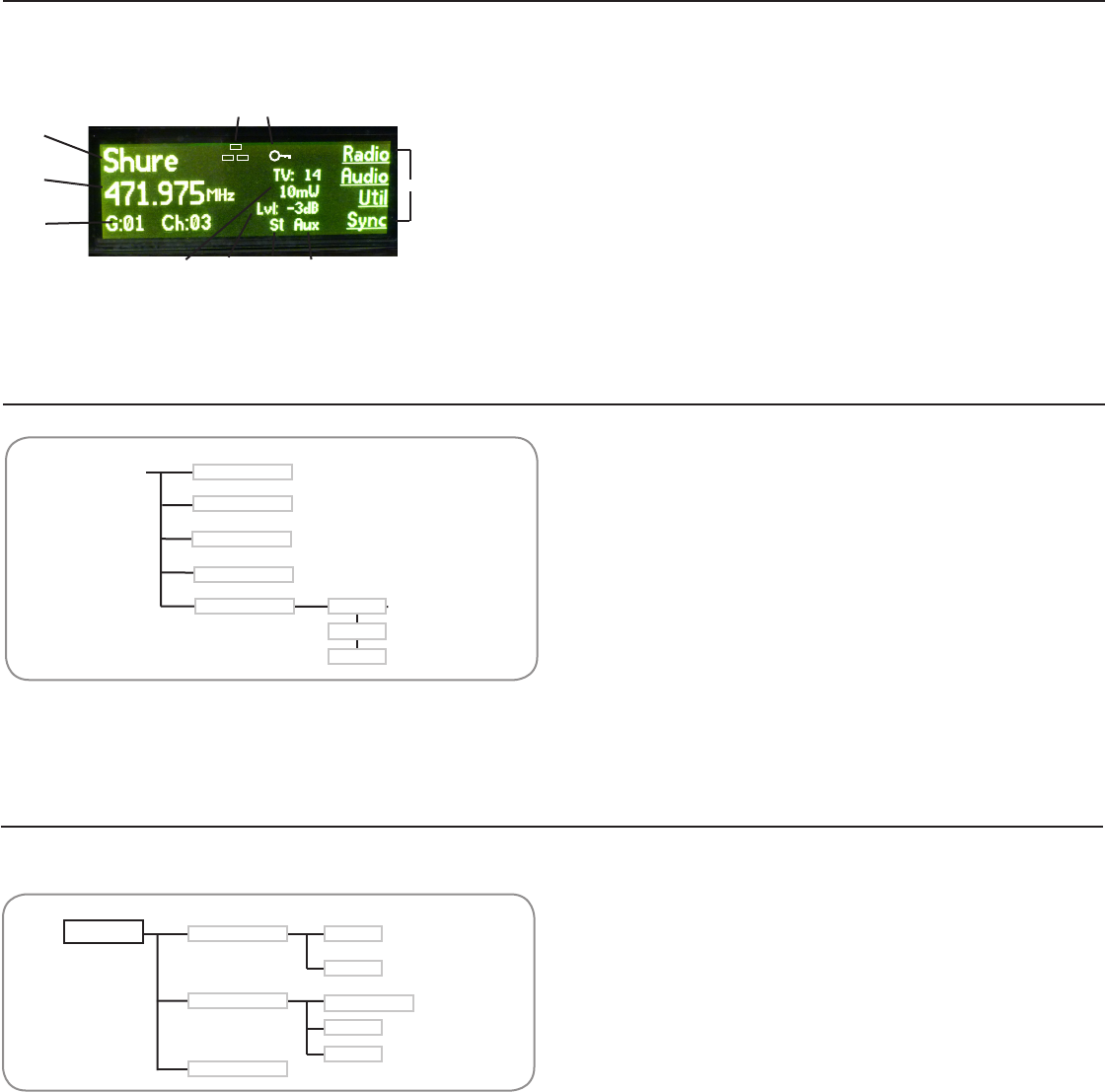
4
RADIO - Displays RF settings
G - Sets the group number - a set of compatible frequency channels
CH - Sets the channel number - within the group
888.888MHz - Frequency selection; adjustable in increments of 1MHz or
kHz
RF POWER - Select from 10, 50, or 100 mW (varies by region)
Custom - For creating custom frequency groups
Load - Searches network for custom groups and loads
devices found
Clear - Clears custom groups
Next - Displays channel and frequency of groups
Audio Settings
INPUT - Sets nominal input level
LINE +4 dBu - line level
AUX –10dBV - aux level
MODE - Selects monitor mode
STEREO/MX - Transmits both channels
MONO - Transmits a mono signal to bodypack
POINT TO POINT - Set up P10T for point to point wireless audio
(see Point to Point section of guide)
LEVEL - Adjusts output level
New illustration to come...
Transmitter Parameters
➊
❷
➌
❻❼➑ ➐
①-Audiochannelname
②-Frequencysetting
③-GroupandChannel
④-NetworkIcon
⑤-LockIcon
⑥-RFPowerLevel
⑦-AudioLevel
⑧-Mix-monoorstereo
⑨-Aux/Linein
⑩-Submenus
⑪-TVChannel
Menu Navigation
RADIO G
CH
888.888MHz
RF POWER
Custom
INPUT
MODE stereo/mix
Line
Aux
mono
Load
Clear
Next
AUDIO
➓
PTP
LEVEL
➍ ➎
Radio - RF Settings
Menu Structure and Navigation
The home menu screen displays a summary of transmitter parameters and available menu choices. Depending on configuration, the home screen will display
the following information:
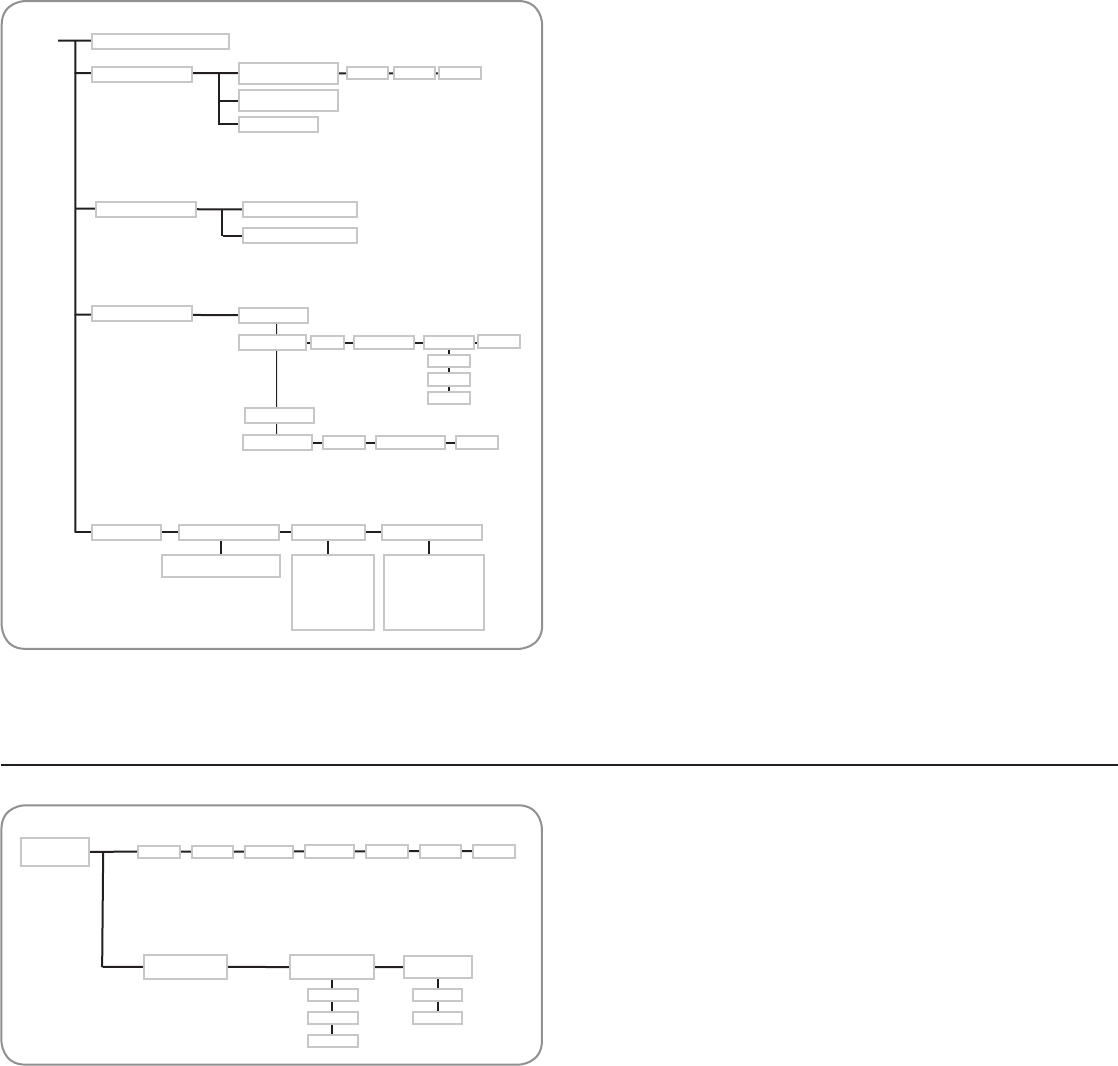
5
CHANNEL NAME - Changes the name on the LCD display (this name is
uploaded to the bodypack with sync) Use control wheel to change letters.
DISPLAY - Changes the display format
Brightness - Adjusts brightness to high, medium or low
Disp. Invert - Inverts display
Contrast - Changes the display contrast
LOCK - Locks power switch and front panel controls.
Front Panel and Power Switch - Turn control wheel to select off
or locked.
NETWORK - Network set-up displays all networked and linked devices
DEVICE - Turn control wheel to change device ID name
SETUP - MODE - Set TX to manual or automatic
Automatic
- Automatic - press flashing Enter button
Manual
- Manually adjust IP, Subnet, MAC - view only
Reset
- Resets all devices to factory default and
deletes all previous settings
FIND ALL - Displays all devices on network
Show
- Flashes LEDS of all devices on network
Info
- Displays TX information
Back
- Returns to previous screen
MORE - Displays product ID, resets and current firmware
Product ID - Displays Product serial number
Reset All - Restores all values on all devices on the network to
factory default settings
FW Update - Sends updated firmware to receiver
RX SETUP - These settings are sent to the bodypack during a sync (when
the sync direction is from the transmitter). The default NO CHANGE
parameter will not change the bodypack settings. Use control knob and exit/
enter buttons to change these settings.
LOCK - Lock bodypack
V LIMIT - Volume limit on/off
LIM VAL - Volume limit value
HIBOOST - High frequency boost
MODE - Stereo (ST) or MixMode (MX)
BAL MX - CH. 1 (L) and CH. 2 (R) mix for MixMode
BAL ST - Left (L) and right (R) balance for stereo mode
Sync Settings
After running a full spectrum scan on the RX, the RF data can be viewed in
Sync Scan and deployed from the TX.
Deploy - Sends open frequencies to available TX
Cursor - Control cursor with control wheel to select open frequencies
Zoom - Turn control wheel to zoom into graphic
Retry - Retry at a different time
OK - Successful sync of TX and RX
Spectrum
Utility Settings
CHANNEL NAME
LOCK
NETWORK
Power Switch
Front Panel
Product ID
Brightness
Disp. Invert
Contrast
DISPLAY Med
High Low
DEVICE
SETUP Mode Automatic
IP
Find All
Reset
UTIL
Manual
SUB
MAC
Show InfoFlash Back
SYNC Lock V Lim Lim Val Hi Boost Bal Mx Bal St
Sync ScanSpectrum Sync
Retry
OK
Deploy
Zoom
Cursor
Mode
MORE
Serial Number
Reset All FW Update
Restores
all values
to factory
defaults
Updates
Firmware of
Receiver
Flash All
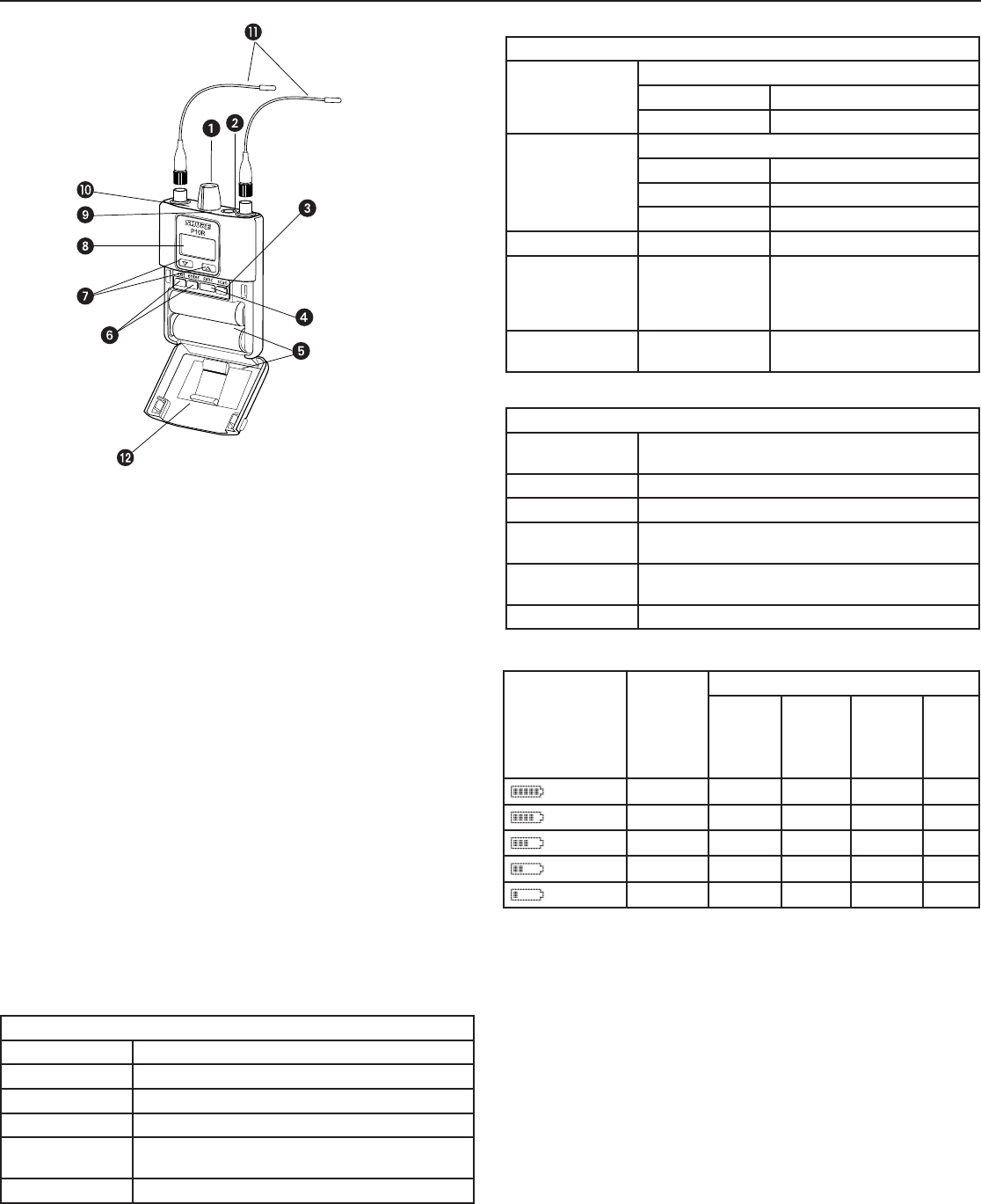
6
Bodypack Receiver
① Power Switch and Volume Control Turns the bodypack on and off and
adjusts earphone volume.
② 3.5 mm Earphone Jack Insert earphones here.
③ Scan Button Press the scan button to find an available frequency. Press
and hold for two seconds to find the group with the most available channels.
④ IR Window For transmitting settings between bodypack and rack unit.
⑤ Battery Compartment Requires 2 AA batteries or rechargeable battery.
Open by pressing the latches on both sides and pulling.
⑥ Menu buttons Useinconjunctionwiththe▼▲buttonstoaccessthecon-
figuration menus.
⑦ ▼▲ Buttons Use to adjust the audio mix (in MixMode only), or in con-
junction with the menu buttons to change settings.
⑧ LCD Screen Displays current settings and menus.
⑨ Tri-Color Battery LED illuminates green, amber, or red to indicate bat-
tery power. When red, change batteries immediately.
⑩ Blue RF LED Indicates the bodypack is receiving a signal from the
transmitter.
⑪ Detachable Antennas SMA Connector
⑫*Removable AA Adapter P10R is shipped with an adapter which can be
removed to accommodate a Shure rechargeable battery pack.
P10R Bodypack Receiver
RF Settings
RADIO
GSets the group number
CH Sets the channel number
888.888MHz Manual frequency selection
Squelch Adjust squelch setting
Full SCAN Performs spectrum scan and displays open frequen-
cies in a graphical interface
RF Pad Attenuates antenna signals in 3 dB increments
Utilities and Display Settings
UTILITIES
CUEMODE Enters CueMode (to exit, press enter and select
EXIT CUEMODE)
DISPLAY Changes the display format
CONTRAST Changes the display contrast
LOCK PANEL Locks all controls except power and volume. To un-
lock, press exit, select OFF, and press enter.
BATTERY Displays the following: Minutes Left, Temperature,
Status, Cycle Count, and Health
RESTORE Returns receiver to factory default settings.
Audio Settings
AUDIO
MODE Selects monitor mode
STEREO Stereo
MIXMODE MixMode
HIBOOST High-frequency EQ boost
OFF flat
4 dB +4 dB @ 10 kHz
2 dB +2 dB @ 10 kHz
V Limit ON Limits volume level
Value 3–9: analogous to volume
knob position (for example, 5
is equal to the 5th dot on the
volume knob)
Gain HI/Standard Hi mode increases gain by
10 dB
*Note:toremoveadapter,opendoorandslideadapterout.Toreplace,
place adapter in place and press, there will be an audible click when
seated.
*Test specs using Energizer brand AA Alkaline batteries:
Battery Life*
Receiver (RX) Settings:
Output driving Shure SE425 earphones
Corresponding SPL @ Ear: ~115 dB SPL
Note: SPL at ear will vary with fit and earphones
HIBOOST - OFF
V. LIMIT - OFF
Transmitter (TX) Settings:
AudioInput:pinknoise*@+8.7dBV
Transmitter Input mode: LINE
Transmitter Input level: -9 dB
*PinkNoiseisasignalwithafrequencyspectrumsuchthatthepowerspec-
tral density is inversely proportional to the frequency. In pink noise, each
octave carries an equal amount of noise power.
Note: Using lower-impedance earphones, different battery types and higher
gain settings in a PSM system may cause the receiver battery life to be dif-
ferent than specified.
Battery
Indicator
Tri-Color
Battery
LED
Approximate Hours Remaining
Alkaline
Volume
Level 4
Alkaline
Volume
Level 6
Alkaline
Volume
Level 8
Li-
ION
Green 5–7 2½-3 1½ 7-8
Green 3½–4 2½–2 1¼ 6-7
Green 3–3½ 1½–2 1 4-6
Green 2–2½ 1½–1 ¾ 2-4
Amber ½–1 1-¾ ½ 1-2

7
Multiple System Setup
When setting up multiple systems, designate a single bodypack to scan for
available frequencies and download them to all the rack units.
The bodypack must be from the same frequency band as all the
transmitters.
1. Power on all the rack units. Turn off the RF. (This prevents them from
interfering with the frequency scan.)
Note: Turn on all other wireless or digital devices as they would be dur-
ing the performance or presentation (so the scan will detect and avoid
any interferance they generate).
2. Use the bodypack to scan for a group by pressing and holding the scan
button for two seconds. The bodypack displays the group and the num-
ber of available channels, and flashes SYNC NOW....
Important: Note the number of available channels. If you have more
rack units than available channels, eliminate potential sources of interfer-
ence and try again, or call Shure Applications for assistance.
3. Sync the bodypack with the first rack unit by aligning the IR windows and
pressing sync.
4. Press scan again on the bodypack to find the next available frequency.
5. Sync the bodypack with the next rack unit.
6. Repeat with all the rack units.
7. Sync each performer’s bodypack to its respective rack unit by aligning the
IR windows and pressing snyc. DO NOT press scan on the bodypacks.
8. Turn on the RF on all rack units. The systems are ready to use.
MixMode for Multiple Systems
Configure each system for MixMode. From the mixing console, send a mix
of the whole band to input 2 of the first transmitter. Connect the LOOP OUT
R output to the CH. 2 IN input of the next transmitter. Continue the chain
with all the transmitters.
Next, create solo mixes for each performer. Send each mix to input 1 of the
transmitter for that performer.
CueMode
CueMode allows you to upload the name and frequency settings from mul-
tiple rack units and store them as a list on a single bodypack. You can then,
at any time, scroll through that list to hear the audio mix from each transmit-
ter, just as each performer does during a show.
CueMode lists are retained even if CueMode is exited, the bodypack is
turned off, or batteries are removed.
Note: Set the channel frequency and assign display names for each trans-
mitter before creating your CueMode list.
Adding Transmitters to the CueMode List
Note: The transmitter must be from the same frequency band as the
bodypack.
1. Open the battery door and press the enter button.
2. From the main menu, scroll to UTILITIES and press enter. Select
CueMode and press enter again.
3. Align IR windows and press sync on the rack unit.
The LCD displays SYNC SUCCESS after frequency and name data are
uploaded to the CueMode list. It also displays the CueMode number for
that transmitter and the total number of transmitters.
4. Repeat the above step for each transmitter.
Note: Syncing while in CueMode does not change any of the settings on the
bodypack.
Auditioning Mixes
1. Enter CueMode from the UTILITIES menu.
2. Usethe▼▲buttonstoscrollthroughyourCueModelisttohearthe
mixes.
Exiting CueMode
Exit CueMode by pressing enter and selecting EXIT CUEMODE.
Managing CueMode Mixes
While in Cue Mode, you can access the following menu by pressing enter:
REPLACE MIX Select and press sync on a rack unit to upload new data
for the current mix (for example, if you have changed the transmitter
frequency).
DELETE MIX Removes the selected mix.
DELETE ALL Removes all mixes.
EXIT CUEMODE Exits CueMode and returns the bodypack to the previous
frequency setting.
Frequency Scan
The scan feature analyzes the RF environment for interference to identify
available frequencies. The PSM1000 has three frequency scan modes:
• Channel Scan Press the scan button on the bodypack. Finds the first
available channel.
• Group Scan Press and hold the scan button for two seconds. Finds
the group with the greatest number of available channels. (Each group
contains a set of frequencies that are compatible when operating multiple
systems in the same environment.)
• Full Scan From the bodypack menu select, Radio>Full Scan. Press
Scan to initiate a full scan. Press Spectrum Scan to view full results in a
graphical display.
Note: follow these steps when doing a full scan:
1.)Turn on all TX's
2.) Turn off all wireless microphone transmitters
3.) Never do a scan near a transmitter in the same frequency band
Sync
The PSM1000 transfers settings in either direction: from the bodypack to the
rack unit, or from the rack unit to the bodypack.
• Downloading settings from the bodypack: First press the scan button
on the bodypack. Then align the IR windows and press the sync button
on the rack unit while the bodypack display is flashing “SYNC NOW...”.
The level LEDs flash on the rack unit.
• Sending settings to the bodypack: Align the IR windows and press
the sync button on the rack unit. The blue LED on the bodypack flashes.
Press sync again to transfer settings.
• Note: When properly aligned the IR window on the transmitter illuminates
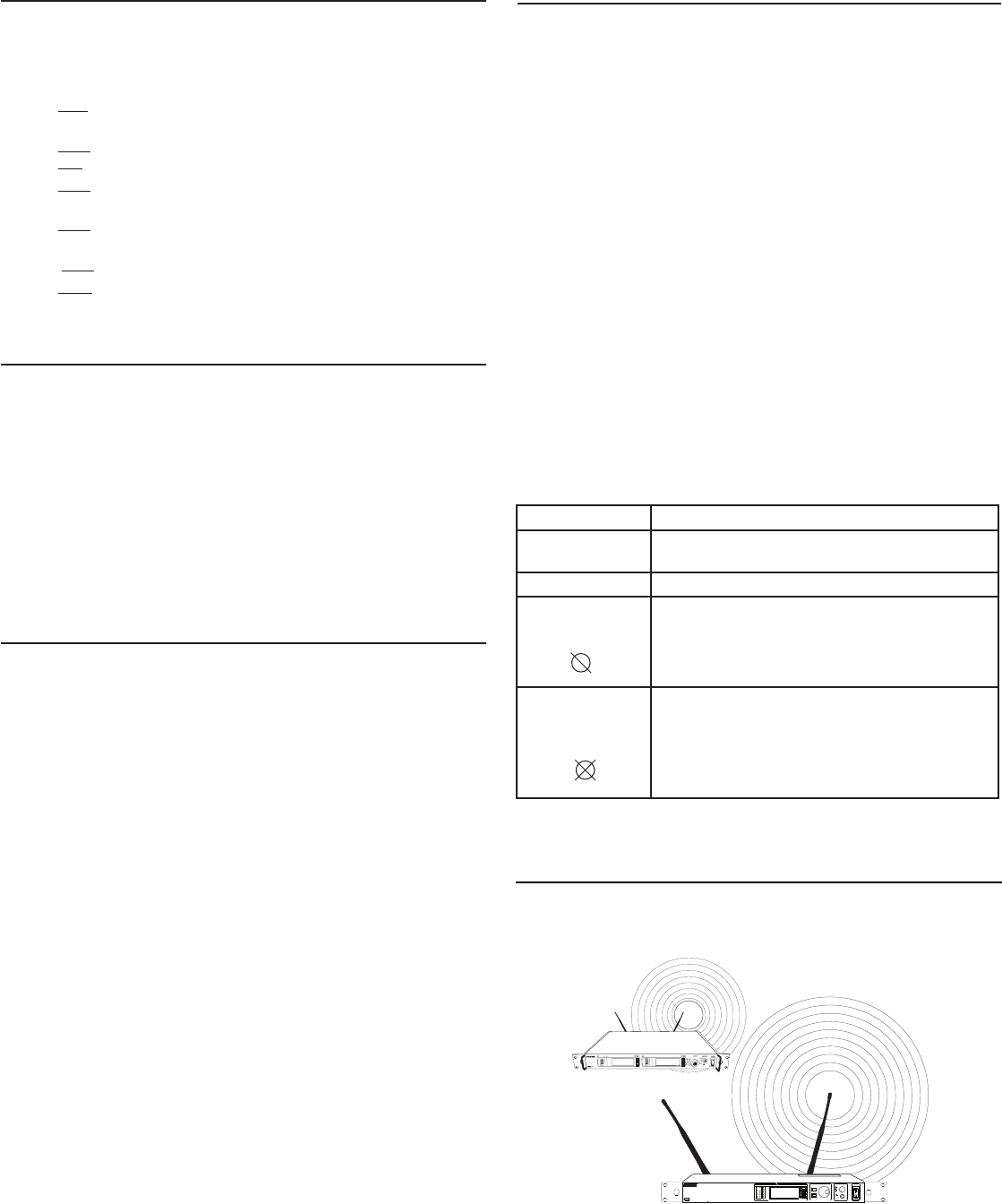
sync
RF Audio
OL
A B
XX YYY-ZZZ MHz Navigate
ENTER
EXIT
OFF
push
Control POWER
Monitor
Monitor Clip
push
UR4S
Wireless Receiver
with Audio Reference Conpanding
LR
8
Squelch
Squelch mutes audio output from the bodypack when the RF signal be-
come noisy. While squelch is activated, the blue LED on the bodypack
turns off.
For most installations, squelch does not need adjustment, and it keeps the
performer from hearing hiss or noise bursts if the RF signal becomes com-
promised. However, in congested RF environments or in close proximity to
sources of RF interference (such as large LED video panels), the squelch
may need to be lowered to prevent excessive audio dropouts. With lower
squelch settings, the performer may hear more noise or hiss, but will experi-
ence fewer audio dropouts.
Note: Before lowering squelch, first try to eliminate the problem by find-
ing the best set of frequencies for your installation and removing potential
sources of interference.
Caution: Turning off or lowering the squelch setting can increase the noise
level and cause discomfort to the performer:
•Donotlowerthesquelchsettingunlessabsolutelynecessary.
•Turnearphonevolumetothelowestsettingbeforeadjustingsquelch.
•Donotchangethesquelchsettingduringaperformance.
•Turnupthetransmittersettingtomakenoiseorhisslessnoticeable.
Point-to-Point Wireless Audio
PTP mode can be used to allow a P10T to transmit to a UHFR receiver.
This allows a transmitter and receiver set-up where both units are racked
and powered by AC.
For more information visit:
www.shure.com/americas/products/personal-monitor-systems
MixMode
Some performers need to hear more of their own voice or instrument, while
others want to hear more of the band. With MixMode, the performer creates
theirownmixusingthebalancecontrol(▼▲buttons)onthebodypack.
To use MixMode, send a solo mix of the performer to the CH. 1 IN input on
the transmitter, and send a band mix to the CH. 2 IN input.
Set the performer’s bodypack for MixMode. The bodypack combines the two
signals and sends them to both earphones, while the balance control on the
bodypack adjusts the relative levels for each.
LOOP Applications
Use LOOP OUT L (left) and R (right) outputs to send a copy of the audio
signal going into the transmitter to other devices. Following are a few of the
many applications for these outputs.
Note: The input level control and the input pad do not affect the LOOP OUT
signals.
Stereo for Multiple Systems
Send one stereo signal from the mixing console to the inputs on the first
transmitter, then connect the LOOP outputs to the inputs on the next trans-
mitter. Repeat for all transmitters to form a chain.
Floor Monitors
Send the audio from the LOOP outputs to on stage loudspeakers. The
bodypack and the on stage monitors receive the same audio signals.
Recording Devices
To record a performance, connect the LOOP outputs to the inputs of a re-
cording device.
Squelch Settings
HIGH (NORMAL) Default factory setting.
MID Moderately decreases the signal-to-noise ratio
required to squelch the receiver.
LOW Greatly decreases the noise squelch threshold.
PILOT ONLY Turns off noise squelch leaving only pilot
squelch on.
Symbol appears in display window
NO SQUELCH Turns off noise and pilot tone squelch. (Sometimes
used as a debugging tool by monitor engineers or
RF coordinators to “listen” to the RF environment.)
Symbol appears in display window
This feature allows you to create your own groups of frequencies.
Creating new groups...
Menu: Radio > Custom
1. Turn the Control wheel to select a custom group number (U1, U2,
U3, etc.)
2. Push the Control wheel to move to the Channel parameter and
turn it to select a channel (01, 02, 03, etc.)
3. Push the Control wheel to move to the Freq parameter and select
a frequency for that channel.
4. Push the NEXT menu key to select a frequency for the next chan-
nel in that group.
5. Load deploys groups over network
6. Clear deletes all custom groups.
Custom Groups
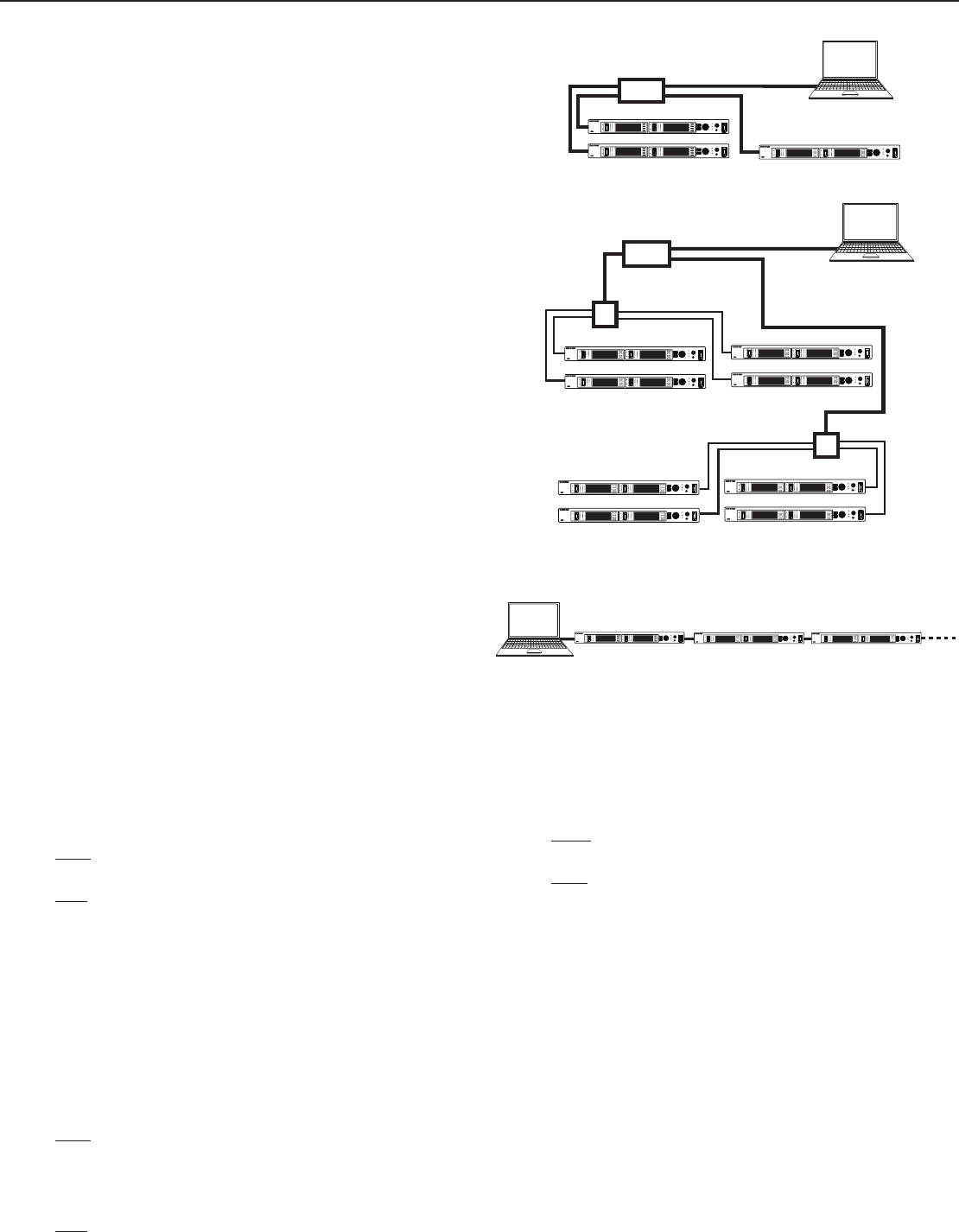
Router with DHCP Computer
Switch
Switch
Router with DHCP and switches Computer
P10T P10T P10T
❶
❷
9
Ethernet Connection
Network Parameters
NOTE:
• The transmitter reboots after you press ENTER to accept network
parameter changes
• These settings affect both transmitters (the dual transmitter is treated as
a single network device).
Set the Transmitter Network Mode
Menu: Util > Network
1. Push the Control wheel to move the cursor to the Mode
parameter.
2. Turn the Control wheel to set the transmitter to one of the
following values:
• Automatic: use this setting when connecting the transmit-
ter to a DHCP server.
• Manual: allows you to set the transmitter to a specific IP
address or subnet.
IP Address and Subnet
Menu: Util > Network
NOTE: To change these settings, the network mode must be set to
Manual.
1. Push the Control wheel to move the cursor to any of the
following parameters:
• IP (IP address)
• Sub (Subnet mask)
2. Turn the Control wheel to change the value.
Networking Transmitters
Basic Network
Each transmitter has an RJ-45 port on the back for connecting
to other transmitters over an Ethernet network. Networking
transmitters allows you to automatically set channels for all the
transmitters with a single group scan command.
❶ Connect transmitter to an Ethernet router with DHCP service.
❷ Use Ethernet switches to extend the network for larger
installations.
❸Use the transmitter’s default network setting
(Util > Network > Mode = Automatic).
Static IP Addressing
The transmitter also supports static IP addressing. Assign your
own IP addresses ( Util > Network > Mode = Manual). NOTE: Dual
transmitters use a single IP address, which may be set through
either LCD interface.
Shure Wireless Workbench Software
Shure Wireless Workbench software includes a variety of useful tools for
installing and managing multiple wireless systems. Instructions on using the
Wireless Workbench software are available in the online help files after you
install the software.
Device ID
Assists in identifying transmitters through the Wireless Workbench
Software (has no effect on network identification).
Menu: Util > Network
1. Push the Control wheel to move the cursor to the DevID
parameter.
2. Turn the Control wheel to set the transmitter to change the
value.
Accessing the Network with a Computer
You can also control and monitor all networked units through the
Shure Wireless Workbench software.
If you want to use the Wireless Workbench software, connect your
computer to the network and install the software from the CD that
came with the transmitter. Make sure your computer is configured
for DHCP (from Control Panel, click Network Connections.
Double-click on Local Area Connection. Select Internet Protocol
(TCP/IP) and click Properties. Select Obtain IP address
automatically and Obtain DNS server address automatically and
click OK).
NOTE: Some security software or firewall settings on your
computer can prevent you from connecting to the transmitter.
If using firewall software, allow connections on port 2201.
Transmitter’s default network setting
❸

10
Multiple Transmitters—Not Networked
If your transmitters are not networked (or in different bands), the
group scan cannot automatically set their group and channel
settings. However, you can still take advantage of the group scan
feature to find the group with the most open channels and the
channel scan feature to find open channels in that group.
Find the group with the most open channels
Perform a group scan following the steps from the Multiple System
Setup section in the user guide for setting up multiple transmitters
which are not networked.
NOTE: Transmitters in different bands (G10, J8, etc.) do not need
to be set to the same group.
Before you begin
• Turn all RF off.
• Install the transmitters and power them on.
• Mute all inputs on mixing devices connected to the
transmitter.
• Turn off the RF transmission on the transmitters for the
systems you are setting up.
• Turn on potential sources of interference such as other
wireless systems or devices, computers, CD players, large
LED panels, effects processors, and digital rack equipment
so they are operating as they would be during the
presentation or performance.
Follow these steps to use the channel scan and group scan
features on the transmitter.
Automatic Frequency Selection
Networked Transmitters
With networked transmitters, you can take advantage of the
group scan feature to set group and channel settings for all the
transmitters at the same time.
Individual Transmitter
1. On receiver, select Scan to find an open channel.
2. Sync receiver to transmitter by aligning it with IR port and
pressing sync button.
Perform a group scan from any receiver
1. Press and hold scan button for 2 seconds to initiate scan.
2. Sync scan results to any transmitter on the network via the
IR port.
3. Follow the transmitter instructions to deploy frequencies to
all networked transmitters
4. Sync receivers with the transmitters carrying the
desired mix.
NOTE: The group scan feature only works for transmitters in the
same frequency band. For example, if you did a group scan
on a “G10” band transmitter, all “G10” band transmitters
would be set up, but not “J8” band transmitters.
Spectrum Scan
Viewing Spectrum Data
Use this feature to scan the full RF spectrum for potential sources of inter-
ference and deploy open frequencies to all transmitters on the network. A
graphical representation of the scan data may be viewed on both the trans-
mitter and receiver. This allows you to scroll through the graph to reveal
details about the frequency and strength of the interfering signals.
Scanning and Deploying Frequencies
1. Turn off RF on all transmitters.
Collect the scan data. From the bodypack receiver MAIN MENU, select
RADIO > FULL SCAN > RUN SCAN
2. The receiver displays SPECTRUM SCAN and scans the full spectrum.
3. Load the scan data from the bodypack receiver to the rack transmit-
ter. Align the IR windows and press Sync > Spectrum > SyncScan
4. The transmitter displays the scan data as a graph and gives options for
viewing and deploying.
Search network for devices. From the rack transmitter Sync > Spectrum
menu, press Deploy.
The rack transmitter searches the network for all available transmitters.
5. Choose a group. Use the control wheel to select from the available
groups.
The number of open frequencies for each group is displayed next to Open
Frequencies:
6. Deploy frequencies. Press the flashing enter button to deploy frequen-
cies to all channels.
The LEDs flash on all affected channels.
redo page layout....
From the Bodypack Receiver
MAIN MENU > RADIO > FULL SCAN > SPECTRUM
• Adjustthecursorpositionusingthe▼▲keys.
• Press enter to zoom in at the cursor position. Press exit to zoom out.
• Press scan to display frequency and power of signal at the cursor
position.
From the Rack Transmitter
Sync > Spectrum
• Adjust the cursor position by pressing Cursor and using the control wheel.
• Frequency and power of signal at the cursor position is displayed at the
top of the screen.
• Press Zoom and use the control wheel to zoom in and out.

11
Connecting the PSM1000 via Ethernet to an AMX or Crestron system.
Command Response
View Transmitter Name < GET DEVICE_NAME >/0d/0a < REPORT DEVICE_NAME vvvvvvvv >/0d/0a
Set Channel Name < SET x CHAN_NAME vvvvvvvv >/0d/0a < REPORT x CHAN _NAME vvvvvvvv >/0d/0a
Get Channel Name < GET x CHAN_NAME >/0d/0a < REPORT CHAN _NAME vvvvvvvv >/0d/0a
Set Audio Level < SET x AUDIO_IN_LVL vvvv >/0d/0a < REPORT x AUDIO_IN_LVL vvvv >/0d/0a
View Audio Level < GET x AUDIO_IN_LVL >/0d/0a < REPORT x AUDIO_IN_LVL vvvv >/0d/0a
Set Transmitter Group & Channel < SET x GROUP_CHAN gg,cc >/0d/0a < REPORT x FREQUENCY vvvvvvvvvvv >/0d/0a
< REPORT x GROUP_CHAN gg,ccvvv >/0d/0a
View Transmitter Group & Channel < GET x GROUP_CHAN >/0d/0a < REPORT x GROUP_CHAN gg,cc >/0d/0a
Set Transmitter Frequency < SET x FREQUENCY vvvvvvvvvvv >/0d/0a < REPORT x FREQUENCY vvvvvvvvvvv >/0d/0a
< REPORT x GROUP_CHAN --,--vvv >/0d/0a
View Transmitter Frequency < GET x FREQUENCY >/0d/0a < REPORT x FREQUENCY vvvvvvvvvvv >/0d/0a
Set RF Tx Level < SET x RF_TX_LVL vvvvvv >/0d/0a < REPORT x RF_TX_LVL vvvvvv >/0d/0a
View RF Tx Level < GET x RF_TX_LVL >/0d/0a < REPORT x RF_TX_LVL vvvvvv >/0d/0a
Set RF Mute < SET x RF_MUTE vvvv >/0d/0a
1 = mute, 0 = unmute
< REPORT x RF_MUTE vvvv >/0d/0a
1 = mute, 0 = unmute
View RF Mute < GET x RF_MUTE >/0d/0a
1 = mute, 0 = unmute
< REPORT x RF_MUTE vvvv >/0d/0a
1 = mute, 0 = unmute
Set Audio Tx Mode < SET x AUDIO_TX_MODE vvvv >/0d/0a
1 = mono, 2 = point to point, 3 = stereo
< REPORT x AUDIO_TX_MODE vvvv >/0d/0a
1 = mono, 2 = point to point, 3 = stereo
View Audio Tx Mode < GET x AUDIO_TX_MODE >/0d/0a < REPORT x AUDIO_TX_MODE vvvv >/0d/0a
1 = mono, 2 = point to point, 3 = stereo
Set Audio Input Line Level < SET x AUDIO_IN_LINE_LVL vvvv >/0d/0a
0 = off (Aux), 1 = on (Line)
< REPORT x AUDIO_IN_LINE_LVL vvvv >/0d/0a
0 = off (Aux), 1 = on (Line)
View Audio Input Line Level < GET x AUDIO_IN_LINE_LVL >/0d/0a < REPORT x AUDIO_IN_LINE_LVL vvvv >/0d/0a
0 = off (Aux), 1 = on (Line)
Set Metering Rate < SET x METER_RATE vvvvvvvvvvv >/0d/0a
0 = off, value in milliseconds
< REPORT x METER_RATE vvvvvvvvvvv >/0d/0a
0 = off, value in milliseconds
View Metering Rate < GET x METER_RATE >/0d/0a < REPORT x METER_RATE vvvvvvvvvvv >/0d/0a
0 = off, value in milliseconds
Audio Meter Level N/A < REPORT x AUDIO_IN_LVL_L vvvvvvvvvvv >/0d/0a
< REPORT x AUDIO_IN_LVL_R vvvvvvvvvvv >/0d/0a
Message Types
The Control system can send two (2) types of command messages, as
follows:
SET - The SET command is sent from the control system to the Shure device
to change the value of a parameter. This is used to SET the parameter to
a specific value. Once a SET command is sent, the Shure device will send
back a REPORT string with the current resultant setting.
GET - The GET command gets the current value of a parameter. Once a
GET command is sent, the Shure device will send back a REPORT string
with the current setting.
The Shure device can send a response with one (1) type of response mes-
sage, as follows:
REPORT - The REPORT string reports the current value for a parameter.
The REPORT string is sent from the Shure device to the Control system in
response to a SET or GET command. The REPORT string is also sent when
the value of the parameter is changed on the Shure device.
•AllmessagessentandreceivedareASCIIcharacters.
•Eachmessagebeginswitha“<”followedbyaspace.
•Eachmessageendswithaspacefollowedbyan“>”.
•Eachmessageisterminatedbyacarriagereturnandlinefeed(CRLF).
The control system may need to enter the hex value of this, which is equiva-
lent to 0x0D0A. Please see the control system user guide for specific infor-
mation on how to enter this.
•Ifthemessageisachannelparameter,theparameterstringmustbepre-
ceded by the number of the channel.
•Ifthemessageisaboxparameter,thereshouldbenochannelnumberin
the string.
Example Messages
This section contains example messages.
Example Messages for Channel Parameters
< GET 1 FREQUENCY >/0d/0a
< REPORT 1 FREQUENCY 578000 >/0d/0a
Example Messages for Box Parameters
< SET DEVICE_NAME Shure >/0d/0a
< REPORT DEVICE_NAME Shure >/0d/0a

12
SPECIFICATIONS
P10R
Tri-Band Filtering
–3 dB at 30.5 MHz from the center frequency of each
band
Active RF Gain Control
31 dB
Adjusts RF sensitivity to provide more RF dynamic range
RF Sensitivity (at 20 dB SINAD)
2.2 µV
Image Rejection
>90 dB
Adjacent Channel Rejection
>70 dB
Squelch Threshold
22 dB SINAD (±3 dB) (default setting)
Intermodulation Attenuation
>70 dB
Blocking
>80 dB
Audio Output Power (1kHz @ <1% distortion, peak
power,@32Ω)
100 mW per output
Minimum Load Impedance
9.5Ω
High Boost
Selectable: +2 dB , +4 dB @ 10 kHz
Volume Limiter
Selectable: 3–9
Limits volume adjustment knob. Selected value analogous to
volume knob increment.
Net Weight
186 g (with batteries)
Dimensions
99 mm X 66 mm X 23 mm
Battery Life
4–6 hours (continuous use) AA Batteries
P10T
RF Output Power
Selectable: 10, 50, 100 mW (+20 dBm)
varies by region
RF Output Impedance
50Ω(typical)
Net Weight
850 g
Dimensions
483 mm X 343 mm X 44 mm
Power Requirement
Input: 100-240V AC, 50/60 Hz, 0.5A max (5.5 max outlet
loaded)
Output: 100-240V AC, 5A max, unswitched
Audio Input
Connector Type
Combination XLR and 6.35 mm (1/4”) TRS
Polarity
XLR: Non-inverting (pin 2 positive with respect to pin 3)
6.35 mm (1/4”) TRS: Tip positive with respect to ring
Configuration
Electronically balanced
Impedance
70.2kΩ(actual)
Nominal Input Level
switchable switchable: +4 dBu, –10 dBV
Maximum Input Level
+4 dBu: +29.2 dBu
–10 dBV: +12.2 dBu
Pin Assignments
XLR: 1=ground, 2=hot, 3=cold
6.35 mm (1/4”) TRS: Tip=hot, Ring=cold,
Sleeve=ground
Phantom Power Protection
up to 60 V DC
Audio Output
Connector Type
6.35 mm (1/4”) TRS
Configuration
Electronically balanced
Impedance
Connected directly to inputs
PSM1000
RF Carrier Range
470–952 MHz
Note: varies by region
Compatible Frequencies
Per band: 49
Tuning Bandwidth
US: 72–80 MHz
varies by region
Operating Range (environment dependent)
90 m (300 ft)
Audio Frequency Response
35 Hz–15 kHz
Signal-To-Noise Ratio (A-Weighted)
90 dB (typical)
Total Harmonic Distortion (ref. ±34 kHz deviation
@1 kHz)
<0.5% (typical)
Companding
Patented Shure Audio Reference Companding
Spurious Rejection (ref. 12dB SINAD)
>80 dB (typical)
Frequency Stability
±2.5 ppm
MPX Pilot Tone
19 kHz (±0.3 kHz)
Modulation
FM*,MPXStereo
*±34kHzdeviation(nominal)
Operating Temperature
-18°C–+57°C
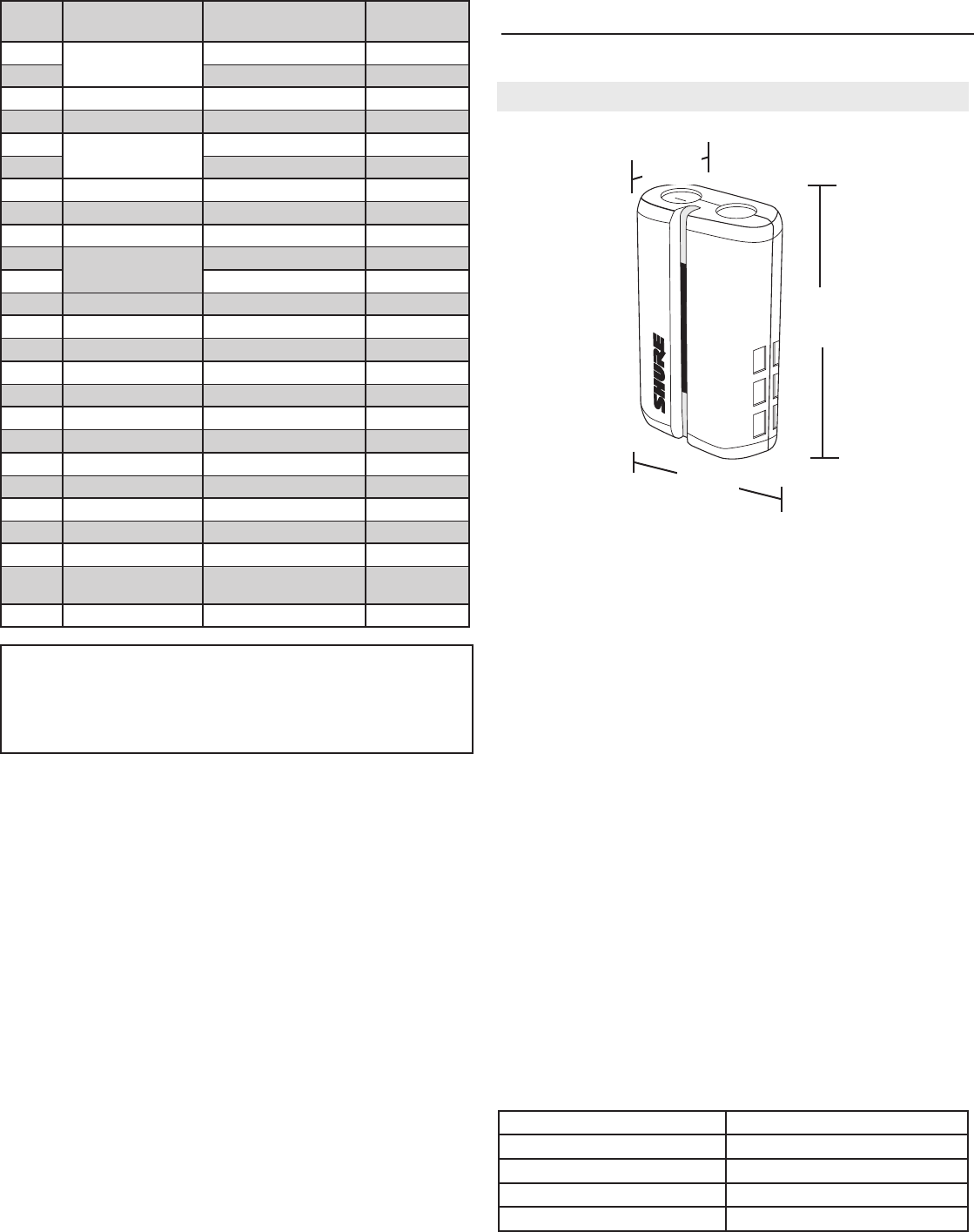
50.4mm
(1.98 in.)
17.5mm
(.67 in.)
31.8mm
(1.25 in.)
13
BAND RANGE COUNTRY Output
Power (mW)
G10 470-542 US, IA 10/50/100
G10E UK, EU, Peru 10/50
H8Z 518-582 NZ, Korea 10/50
J8 554-626 US, IA 10/50/100
J8E EMEA 10/50
K10E 596-668 UK, EU, Australia 10/50
L8 626-698 US, IA, Aus 10/50/100
L8E Emea 10/50
L9E 670-742 China 10/50
L10 670-742 HK 10/20
P8 710-790 EU 10/50
Q21 710-787 China 10/50
Q22E 750-822 EU 10/50
Q23 750-806 HK 10/20
R26 794-806 Taiwan 6/10
R27 794-806 Thailand/EMEA 10/50
A24 “779-788
797-806”
Japan 6/10
X1 944-952 US 10/50/100
NOTE:
This Radio equipment is intended for use in musical professional
entertainment and similar applications. This Radio apparatus may be
capable of operating on some frequencies not authorized in your region.
Please contact your national authority to obtain information on authorized
frequencies and RF power levels for wireless microphone products.
Dimensions
Specifications
Shure Rechargeable SB900
The SB900 is a rechargeable Lithium-ion battery with a capacity of
1450 mAh.
Note: Place battery into charger, slotted side down with Shure logo facing
down, warnings facing up.
Charge Temperature: 0°C to 45°C (recommended)
Constant Charge Voltage: 4.2V +/-0.05V
Constant Charge Current: 750 mAh
Nominal Voltage: 3.7V
Rated Capacity: 1450 mAh
For more information on batteries and chargers visit: www.shure.com
CAUTION: Danger of explosion if battery incorrectly replaced.
Replace only with the same or equivalent type
WARNING: Battery packs shall not be exposed to excessive heat such as
Sunshine, fire or the like.
• Battery Packs may explode or release toxic materials
• Never put batteries in mouth. If swallowed, contact your physician
or local poison control center.
• Do not short circuit; may cause burns or catch re
• Do not charge or use battery packs with other than specied Shure
products
• Dispose of battery packs properly. Check with local vendor for
proper disposal of used battery packs.
• Use this battery charger only with the Shure Model PS50 series
power supply.
This equipment is intended to be used in professional audio applications
EMC conformance is based on the use of supplied and recommended
cable types. The use of other cable types may degrade EMC performance.
Use this battery charger only with the Shure charging modules and battery
packs for which it is designed. Use with other than the specified modules
and battery packs may increase the risk of fire or explosion.
Changes or modifications not expressly approved by Shure Incorporated
could void your authority to operate this equipment.
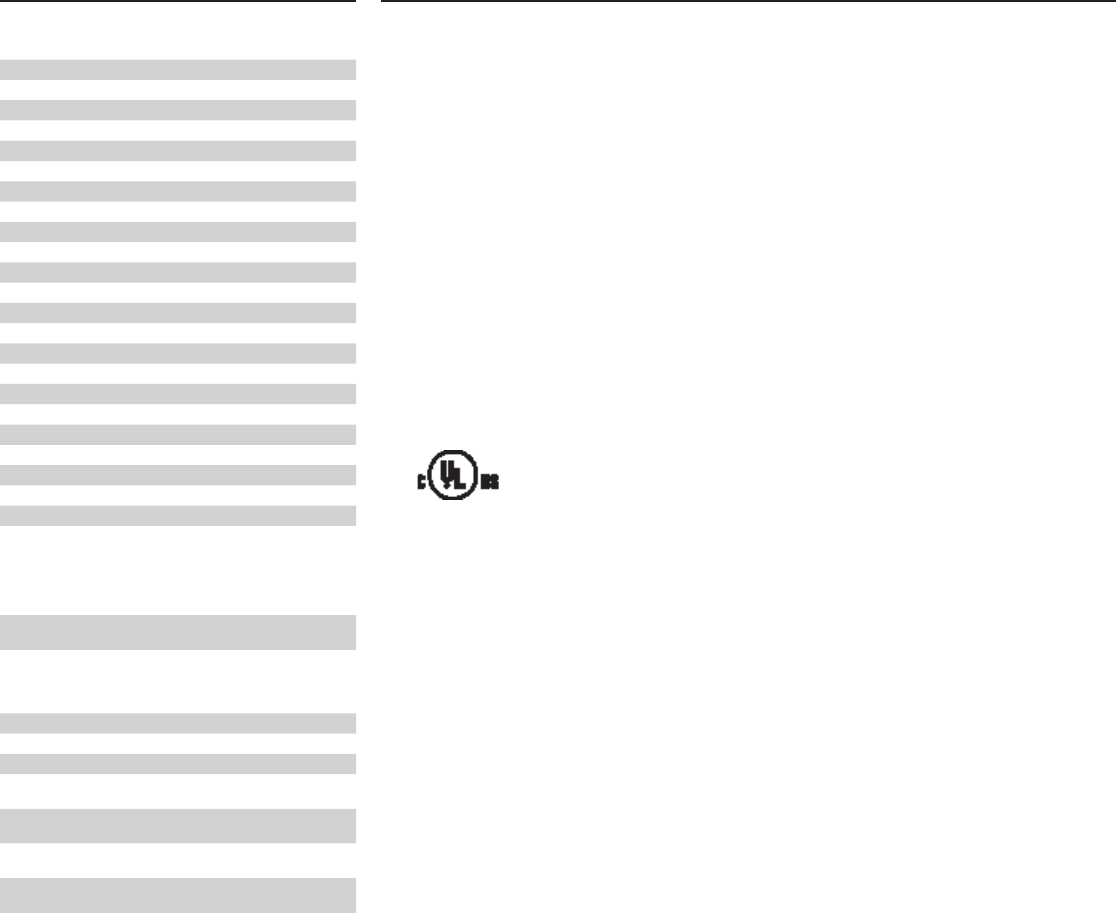
14
ACCESSORIES AND PARTS CERTIFICATION
P10T, P10R
This Class B digital apparatus complies with
Canadian ICES-003.
Cet appareil numérique de la classe B est con-
forme à la norme NMB-003 du Canada.
Meets requirements of EMC standards EN 300
422 Parts 1 and 2 and EN 301 489 Parts 1 and 9.
P10T
Certified under FCC Parts 74. (FCC ID:
DD4P10TA, DD4P10TB, DD4P10TC, DD4P10TD,
DD4P10TJ). Certified by IC in Canada under
RSS-123 and RSS-102. (IC: 616A-P10TA,
616A-P10TB, 616A-P10TC, 616A-P10TD). Meets
essential requirements of European R&TTE
Directive 99/5/EC, eligible to bear the CE mark.
P10R
Approved under the Declaration of Conformity
(DoC) provision of FCC Part 15. Certified in
Canada by IC to RSS-123. (IC: 616A-P10RA,
616A-P10RB, 616A-P10RC, 616A-P10RD).
Operation of this device is subject to the follow-
ing two conditions: (1) this device may not cause
interference, and (2) this device must accept
any interference, including interference that may
cause undesired operation of the device.
The CE Declaration of Conformity can be ob-
tained from Shure Incorporated or any of its
European representatives. For contact infor-
mation please visit www.shure.com The CE
Declaration of Conformity can be obtained from:
Authorized European representative:
Shure Europe GmbH
Headquarters Europe, Middle East & Africa
Department: EMEA Approval
Wannenacker Str. 28
D-74078 Heilbronn, Germany
Phone: +49 7131 72 14 0
Fax: +49 7131 72 14 14
Email: EMEAsupport@shure.de
LICENSING INFORMATION
Licensing: A ministerial license to operate this
equipment may be required in certain areas.
Consult your national authority for possible
requirements. Changes or modifications not ex-
pressly approved by Shure Incorporated could
void your authority to operate the equipment.
Licensing of Shure wireless microphone equip-
ment is the user’s responsibility, and licensability
depends on the user’s classification and ap-
plication, and on the selected frequency. Shure
strongly urges the user to contact the appropriate
telecommunications authority concerning proper
licensing, and before choosing and ordering
frequencies.
INFORMATION TO USER
This equipment has been tested and found to
comply with the limits for a Class B digital device,
pursuant to Part 15 of the FCC Rules. These lim-
its are designed to provide reasonable protection
against harmful interference in a residential instal-
lation. This equipment generates, uses and can
radiate radio frequency energy and, if not installed
and used in accordance with the instructions, may
cause harmful interference to radio communica-
tions. However, there is no guarantee that inter-
ference will not occur in a particular installation. If
this equipment does cause harmful interference
to radio or television reception, which can be de-
termined by turning the equipment off and on, the
user is encouraged to try to correct the interfer-
ence by one or more of the following measures:
• Relocate the receiving antenna.
• Increase the separation between the equipment
and receiver.
• Connect the equipment into an outlet on a
circuit different from that to which the receiver
is connected.
• Consult the dealer.
Note: EMC conformance testing is based on the
use of supplied and recommended cable types.
The use of other cable types may degrade EMC
performance.
Changes or modifications not expressly ap-
proved by the manufacturer could void the
user’s authority to operate the equipment.
Meets UL 60065 and CSA C22.2 No. 60065
EU Declaration of Conformity is available
at: www.shure.com
Declaration of Conformity
Furnished Accessories
P10R Antenna
470–530 MHz UA700
540–626 MHz UA710
596–692 MHz UA720
670–830 MHz UA730
830–952 MHz UA740
P10T Antenna
470–542 MHz UA820G10
554-626 MHz UA820J8
596-668 MHz UA820K1
626-698 MHz UA820L8
670-742 MHz UA820LCH
710-790 MHz UA820P8
750-822 MHz UA820Q2
944-952 MHz UA820X
518-582 MHz UA820H8
Front Mount Antenna Cable 95A9023
Zipper Bag 95A2313
Rack mount Bracket, Long 53A8612
Rack mount Bracket, Short 53A8611
Link Bar 53B8443
Hardware Kit (Rack mounting Screws) 90AR8100
Bumper Kit 90B8977
Optional Accessories
8-to-1 antenna combiner for better RF
performance PA821SWB
4-to-1 antenna combiner with power dis-
tribution to 4 transmitters (better RF per-
formance and eliminates need for external
power supply)
PA421SWB
Passive Directional Antenna PA805SWB
Helical Antenna HA-8089
Passive Omnidirectional Antenna UA860SWB
Coaxial Cable, BNC-BNC, RG58C/U type,
50 Ohm, 2 ft length (0.6 m) UA802
Coaxial Cable, BNC-BNC, RG58C/U type,
50 Ohm, 6 ft length (2 m) UA806
Coaxial Cable, BNC-BNC, RG8X/U type,
50 Ohm, 25 ft length (7.5 m) UA825
Coaxial Cable, BNC-BNC, RG8X/U type,
50 Ohm, 50 ft length (15 m) UA850
Coaxial Cable, BNC-BNC, RG213/U Type,
50 Ohm, 100 ft length (30 m) UA8100
i
